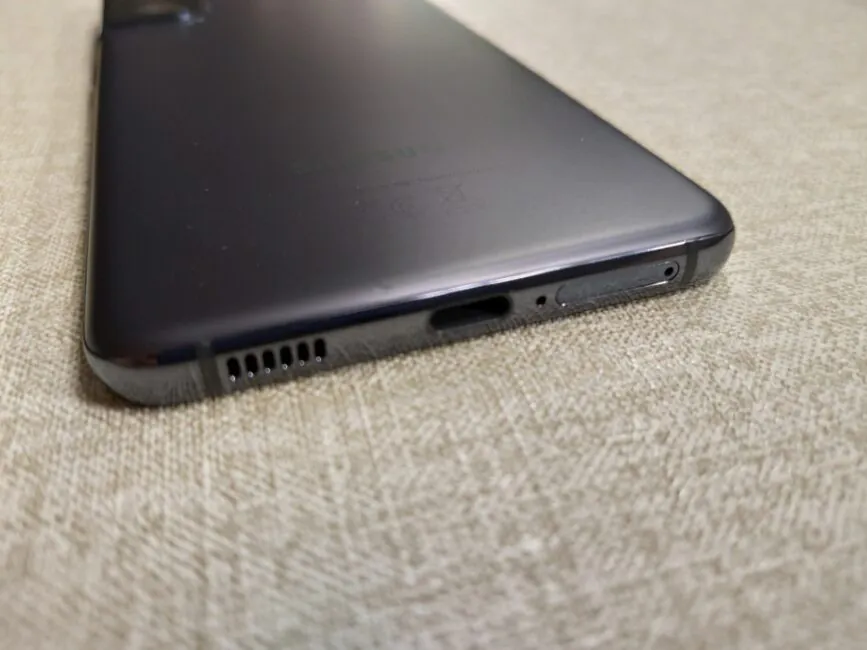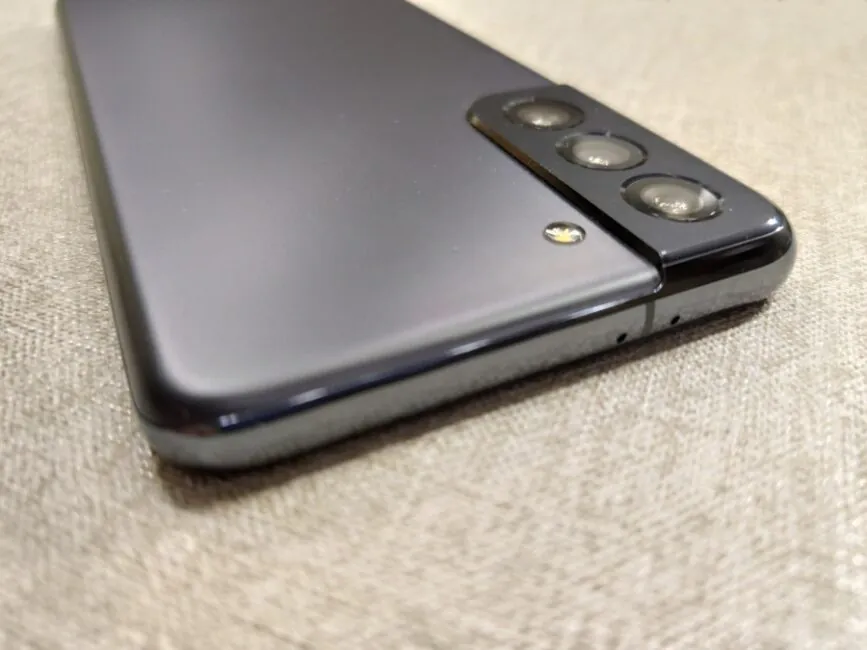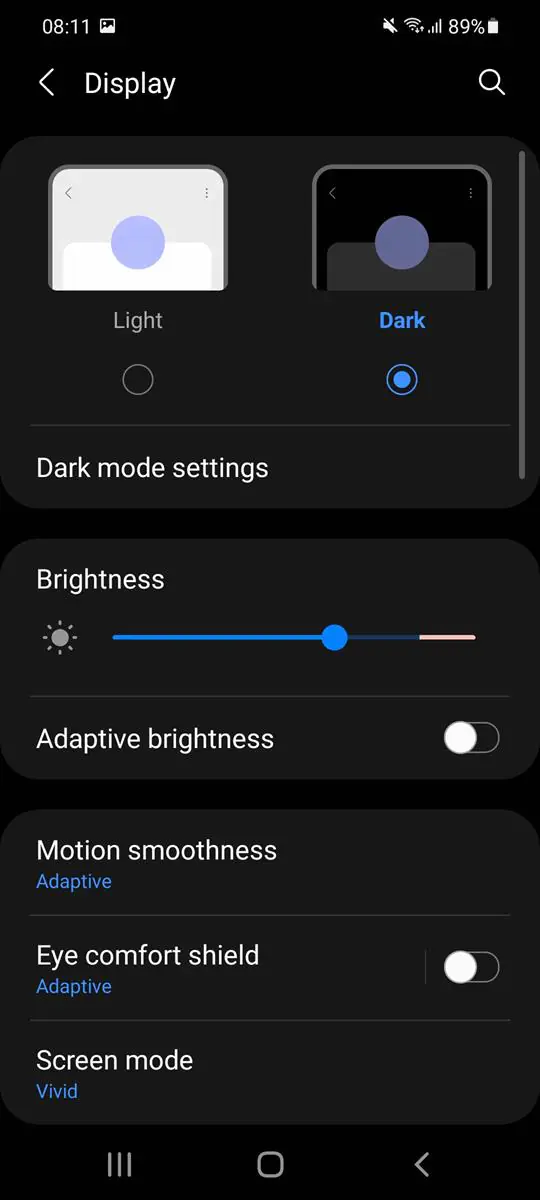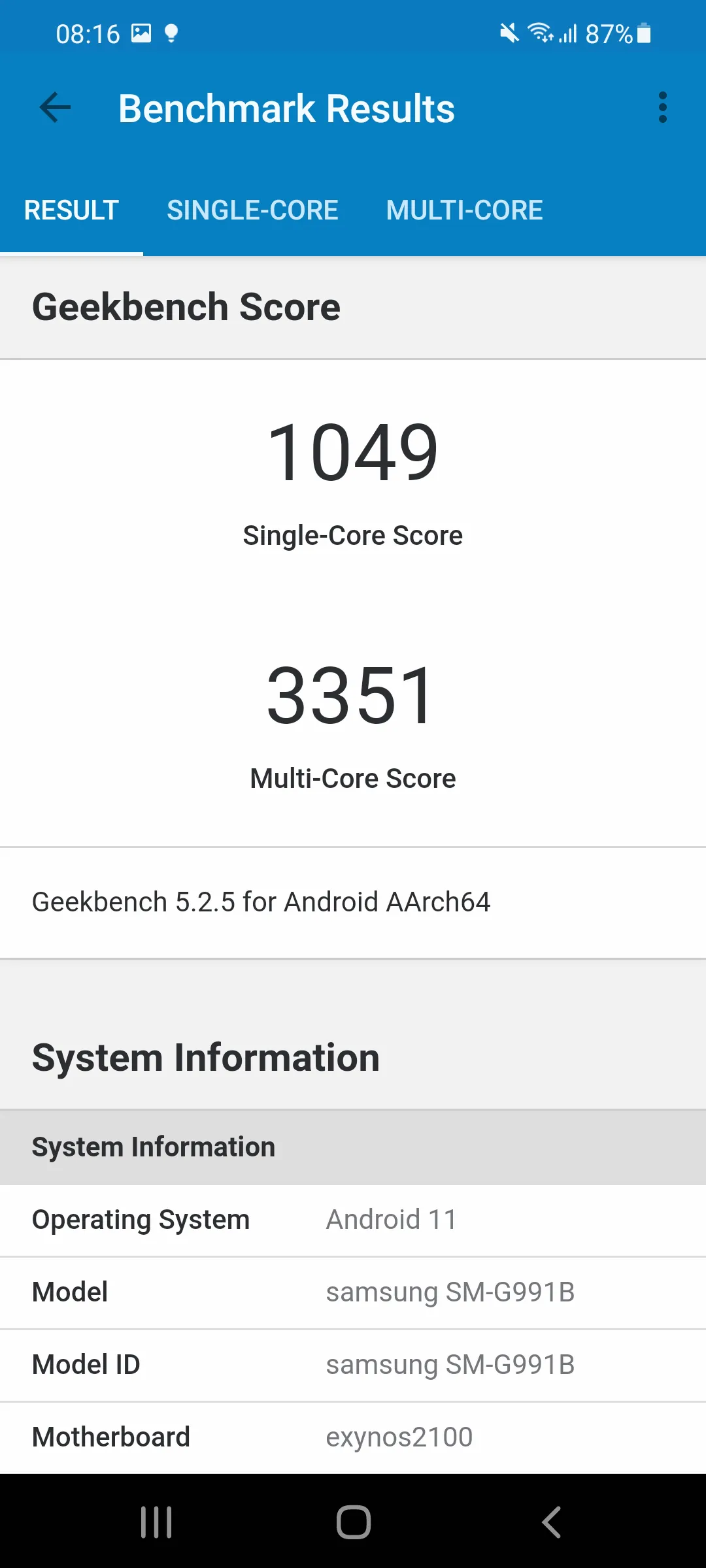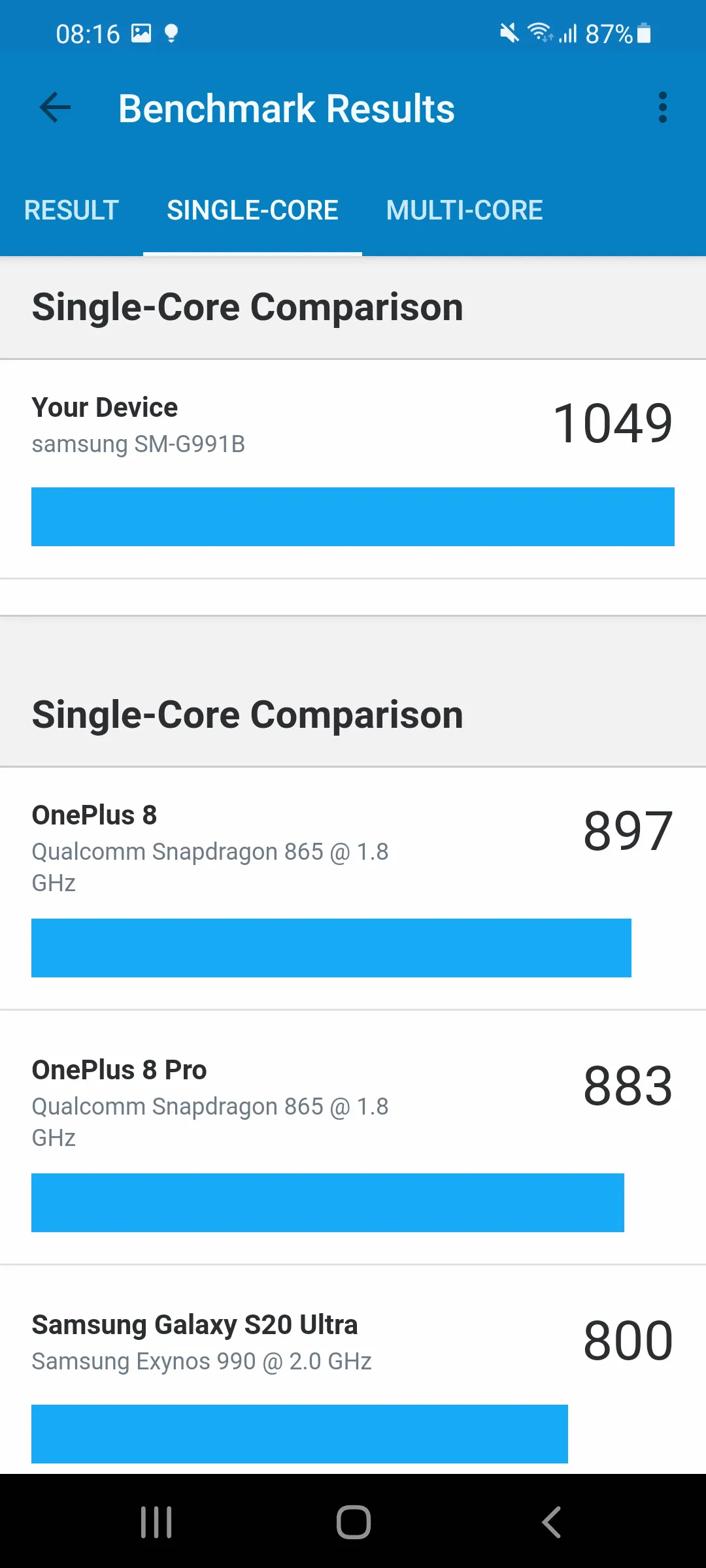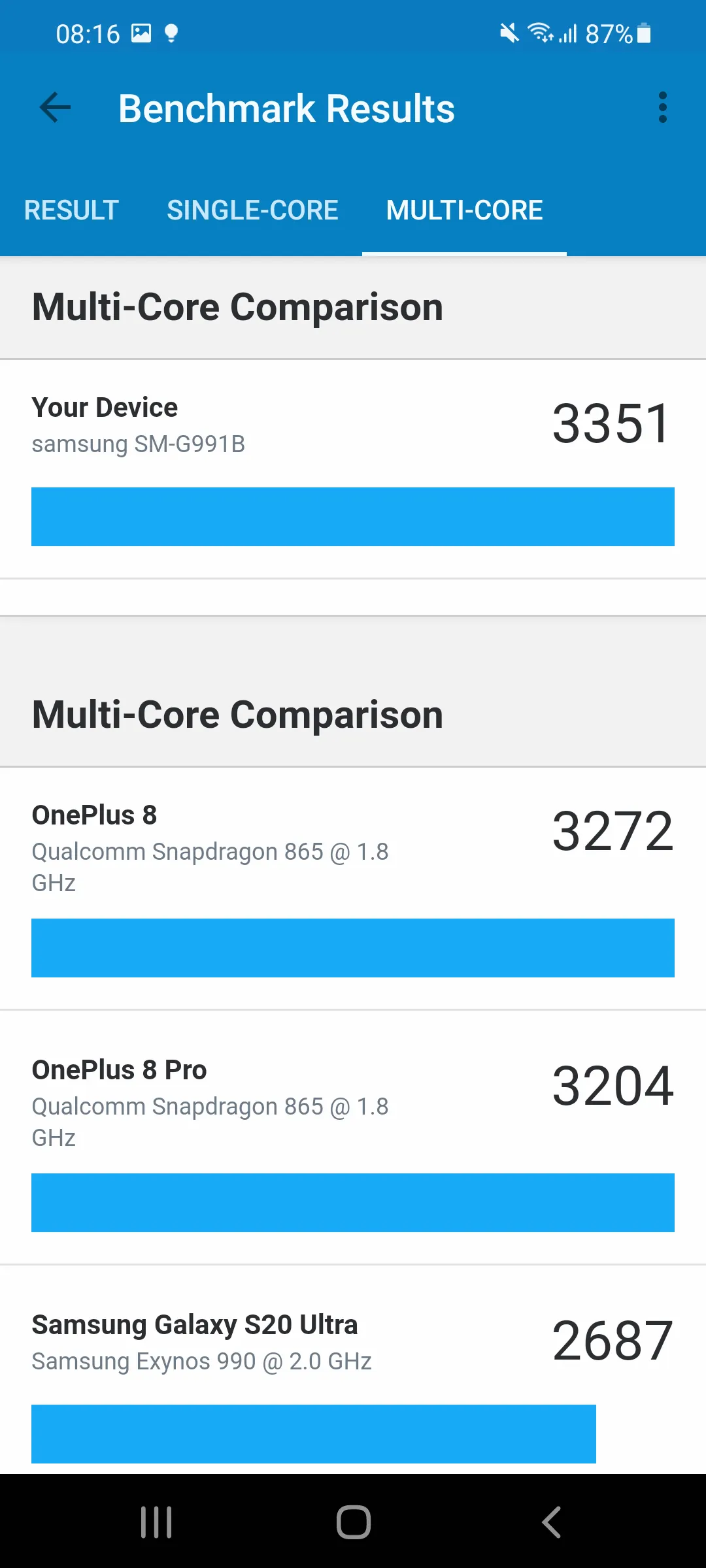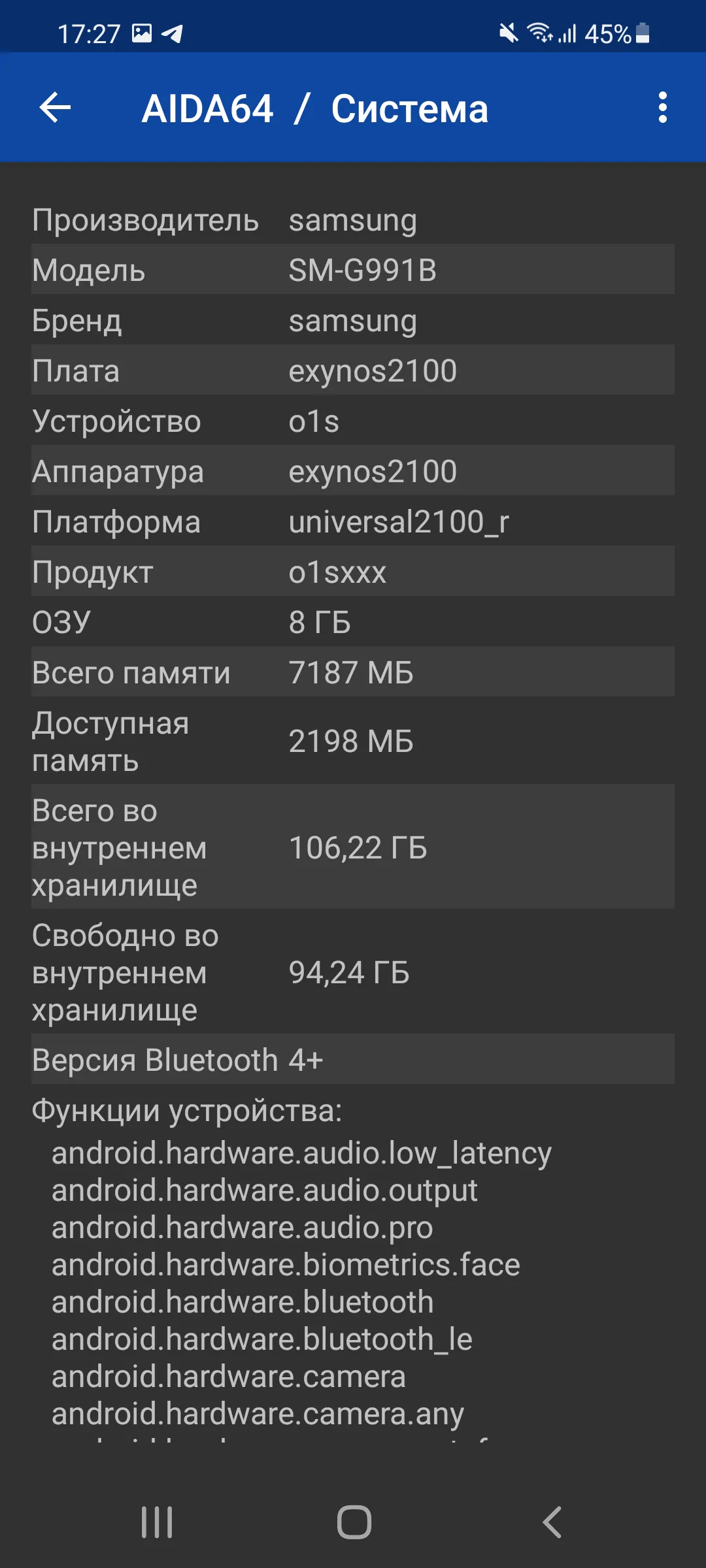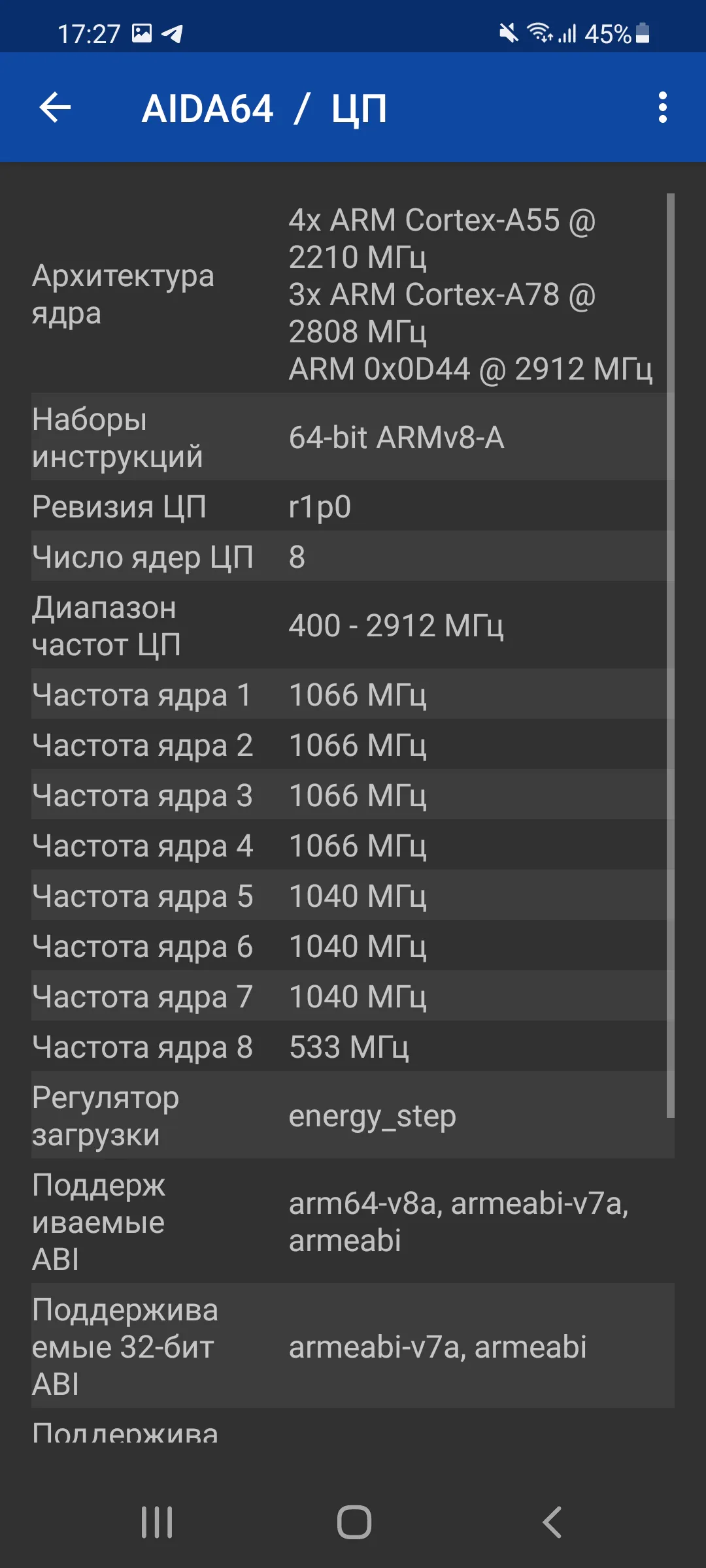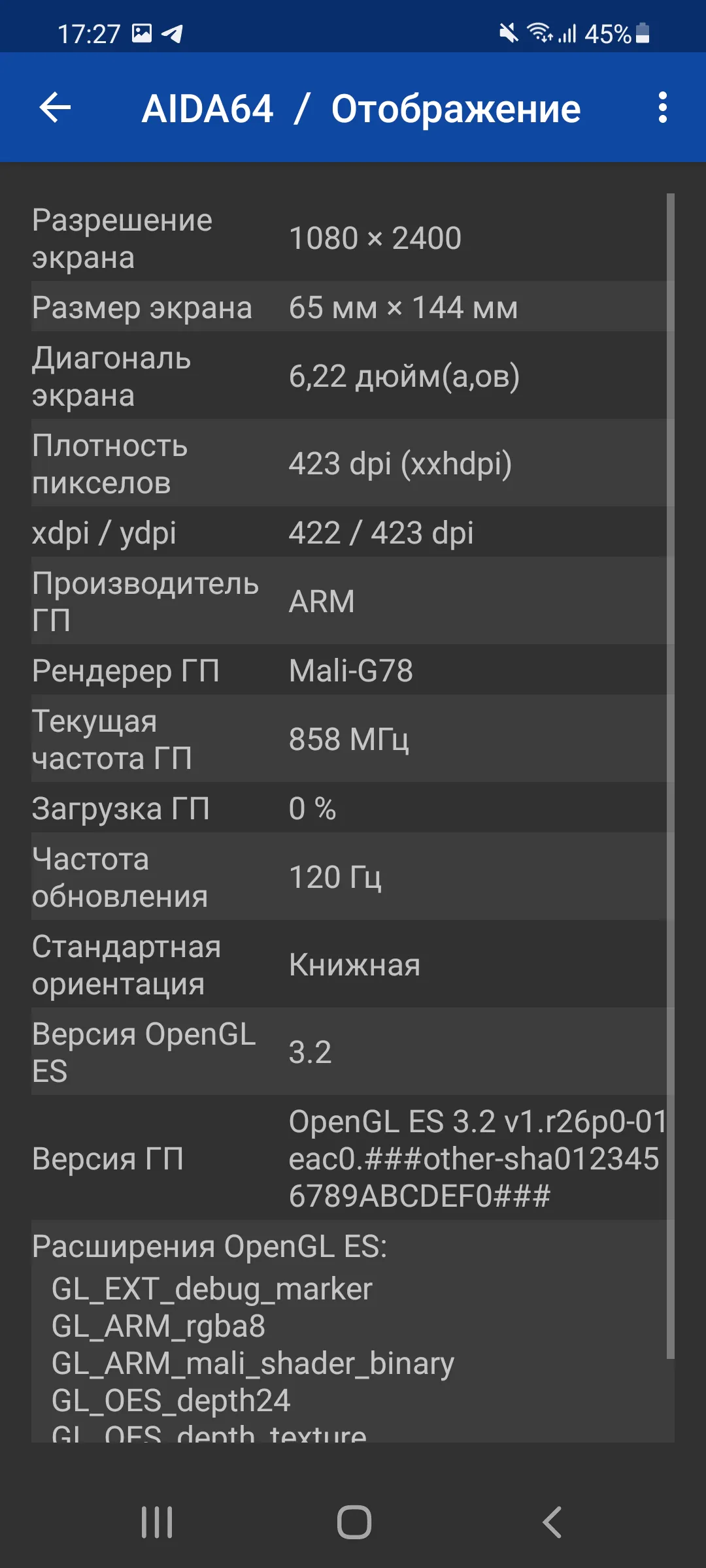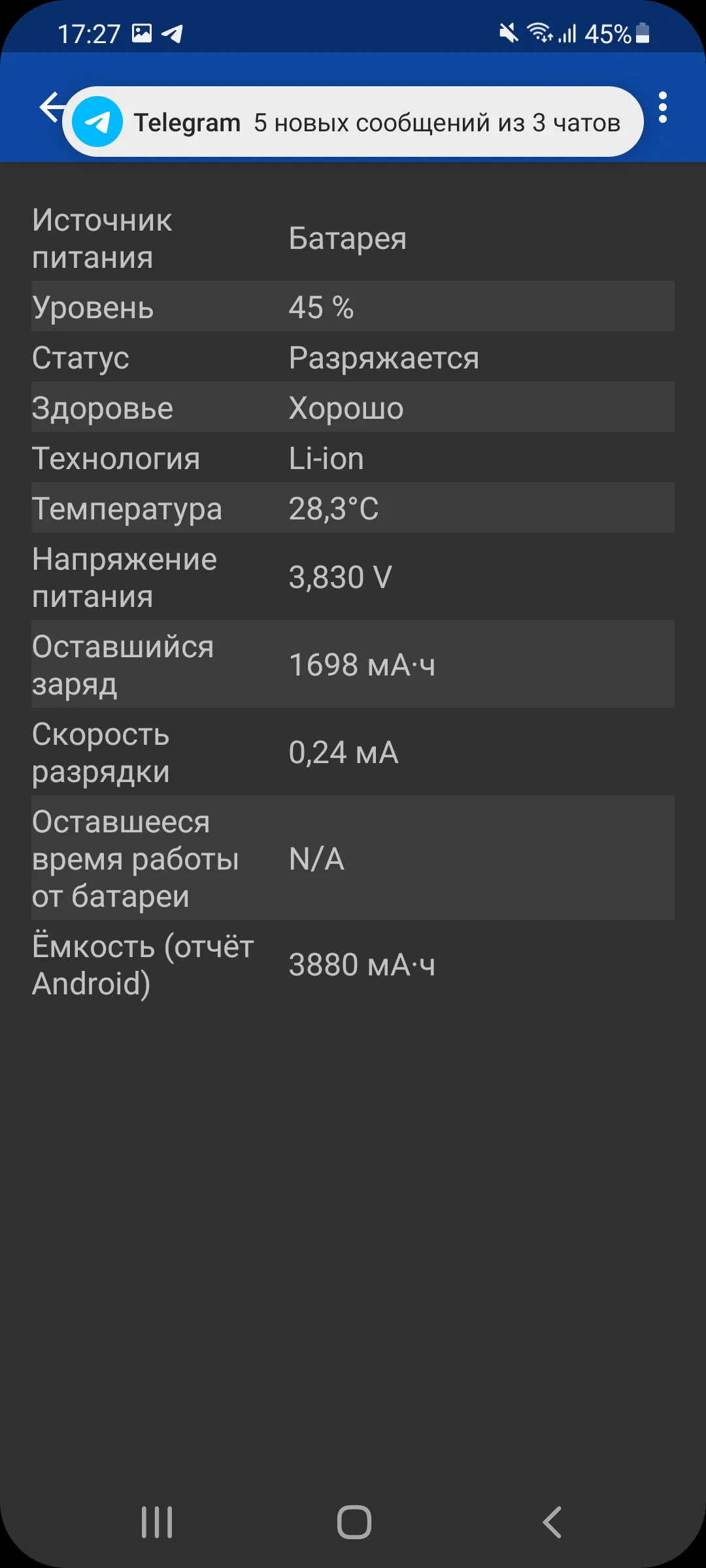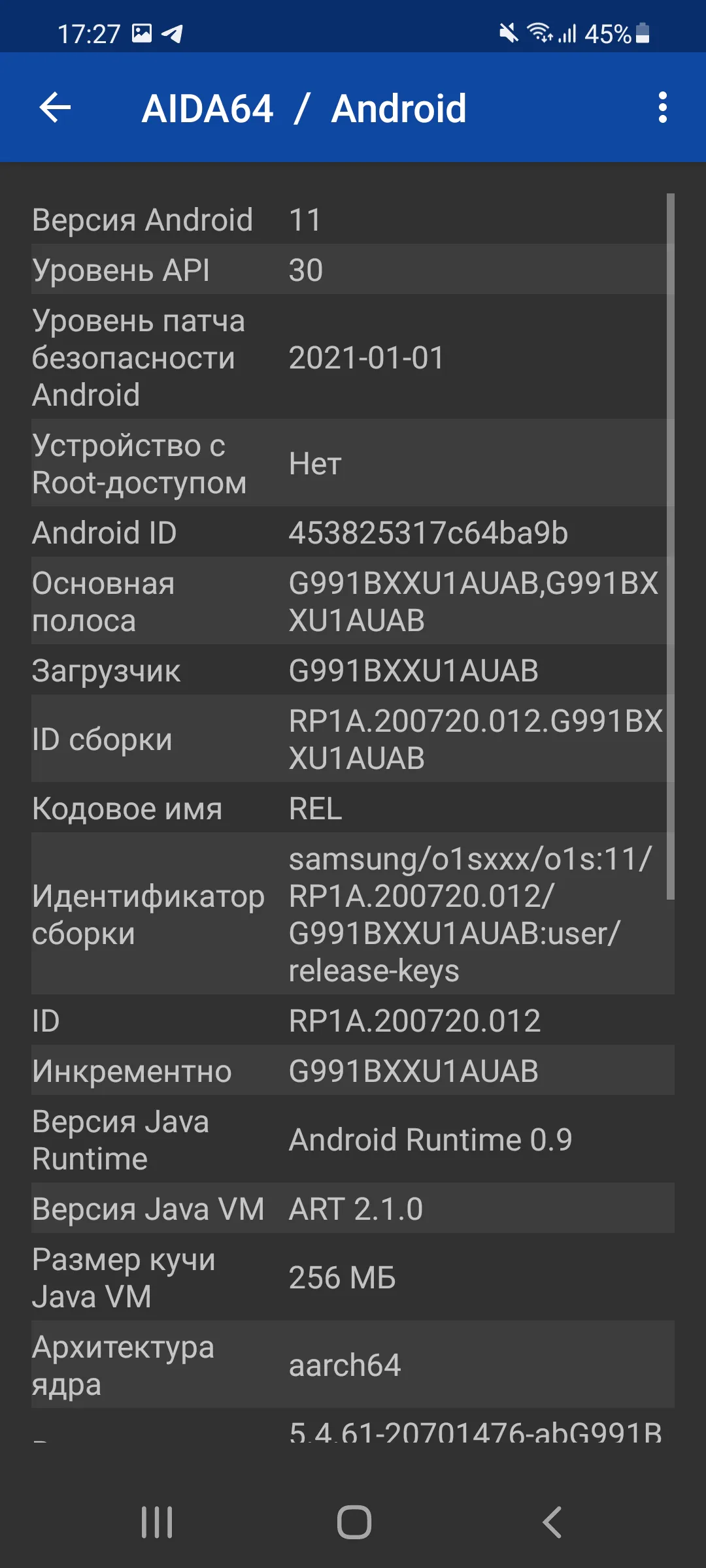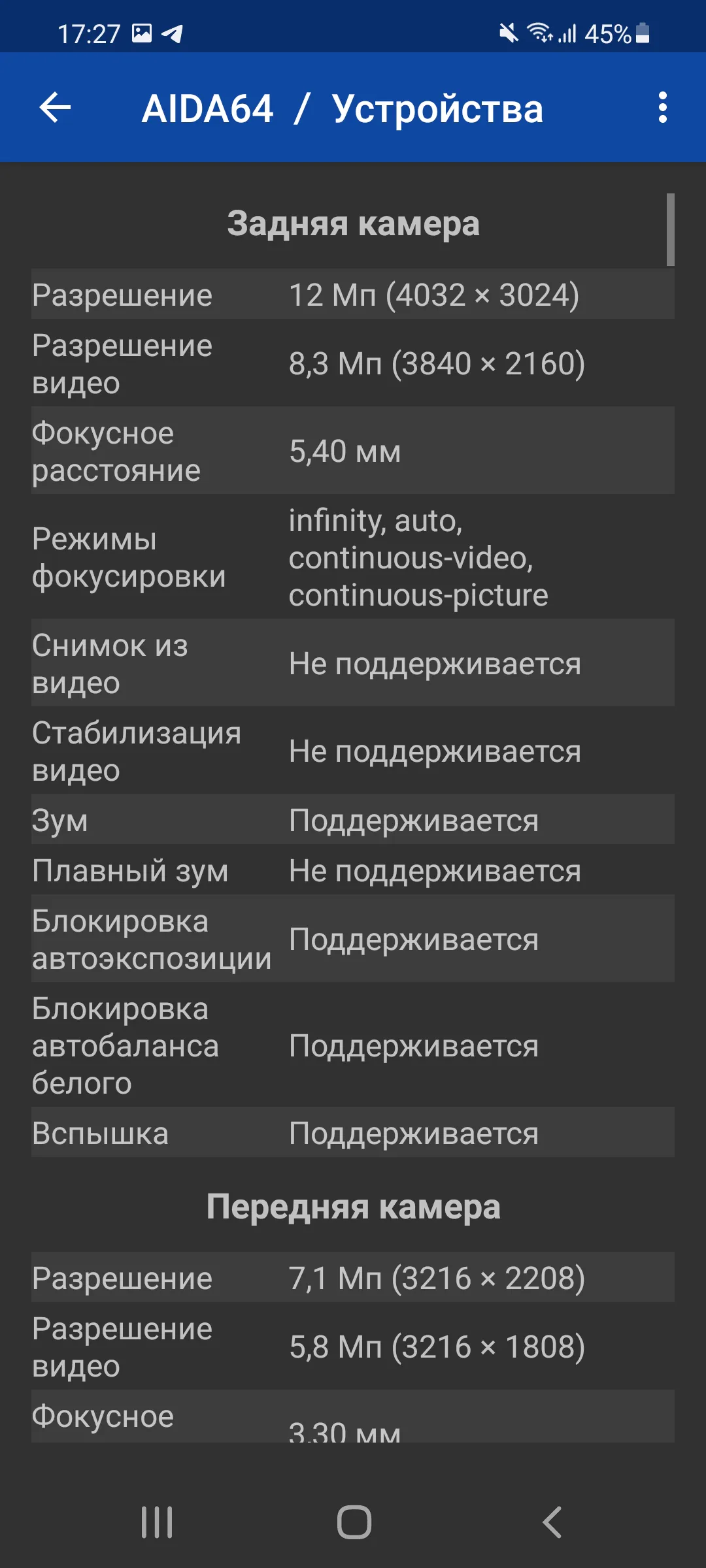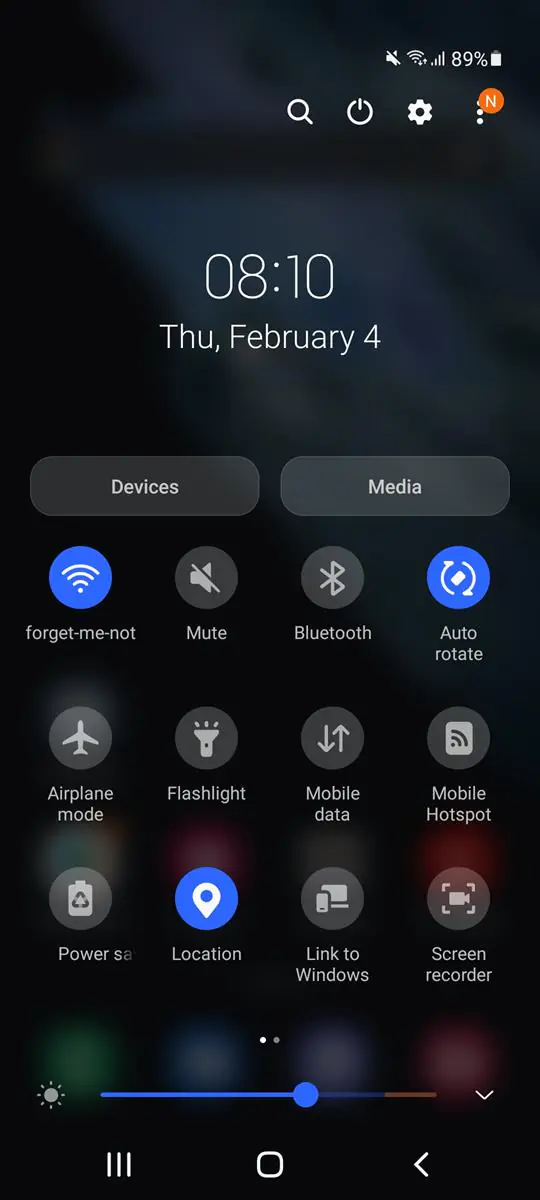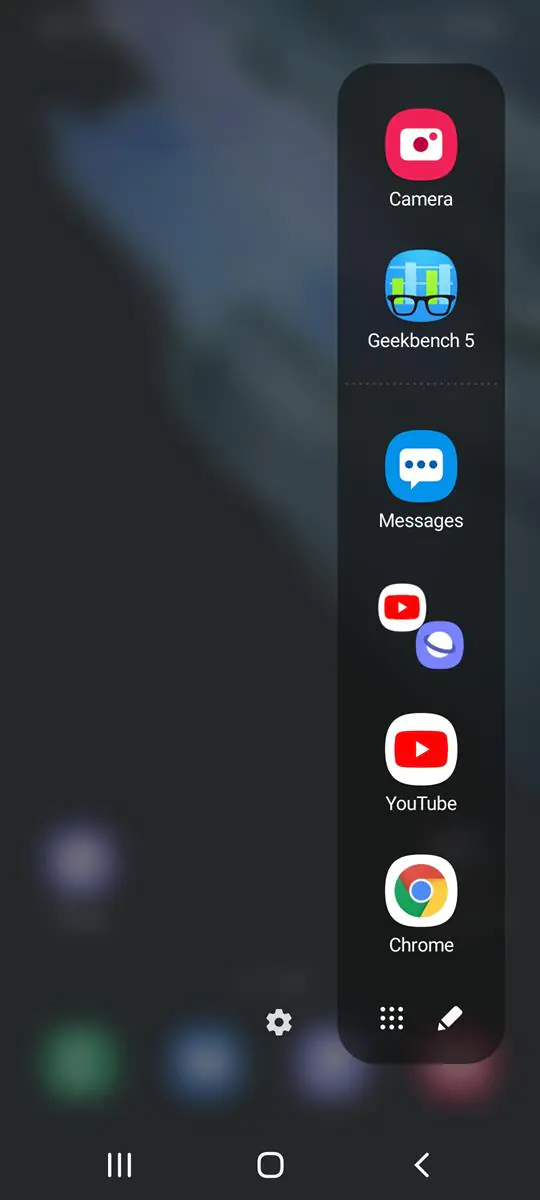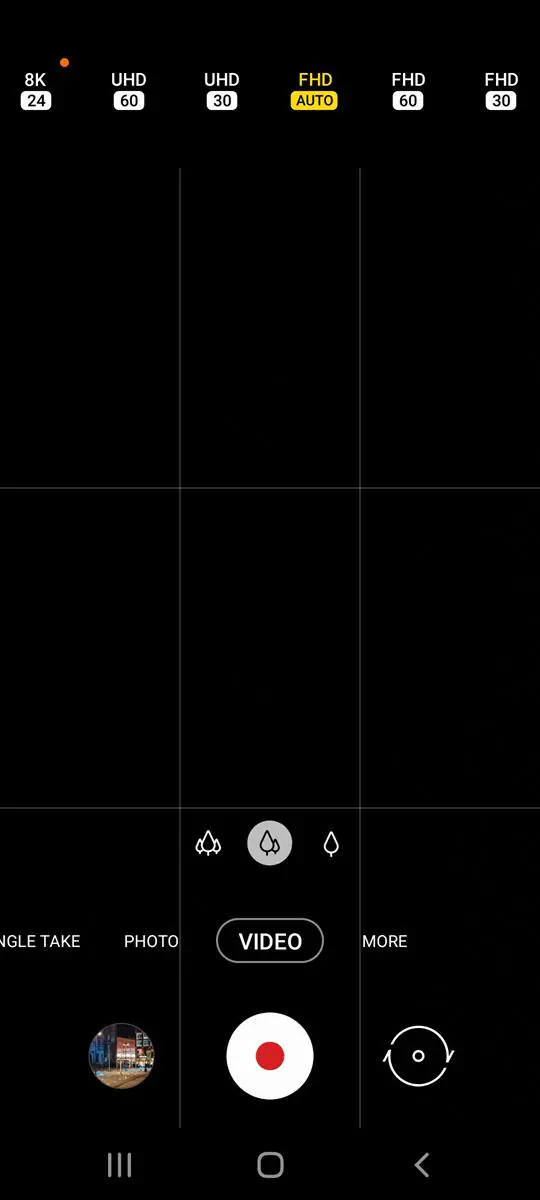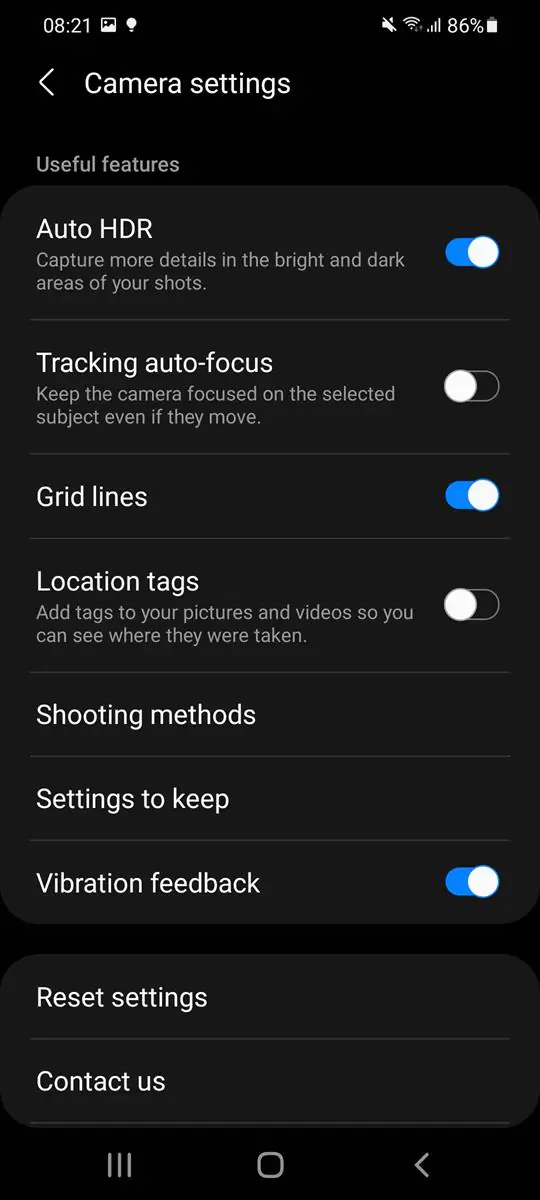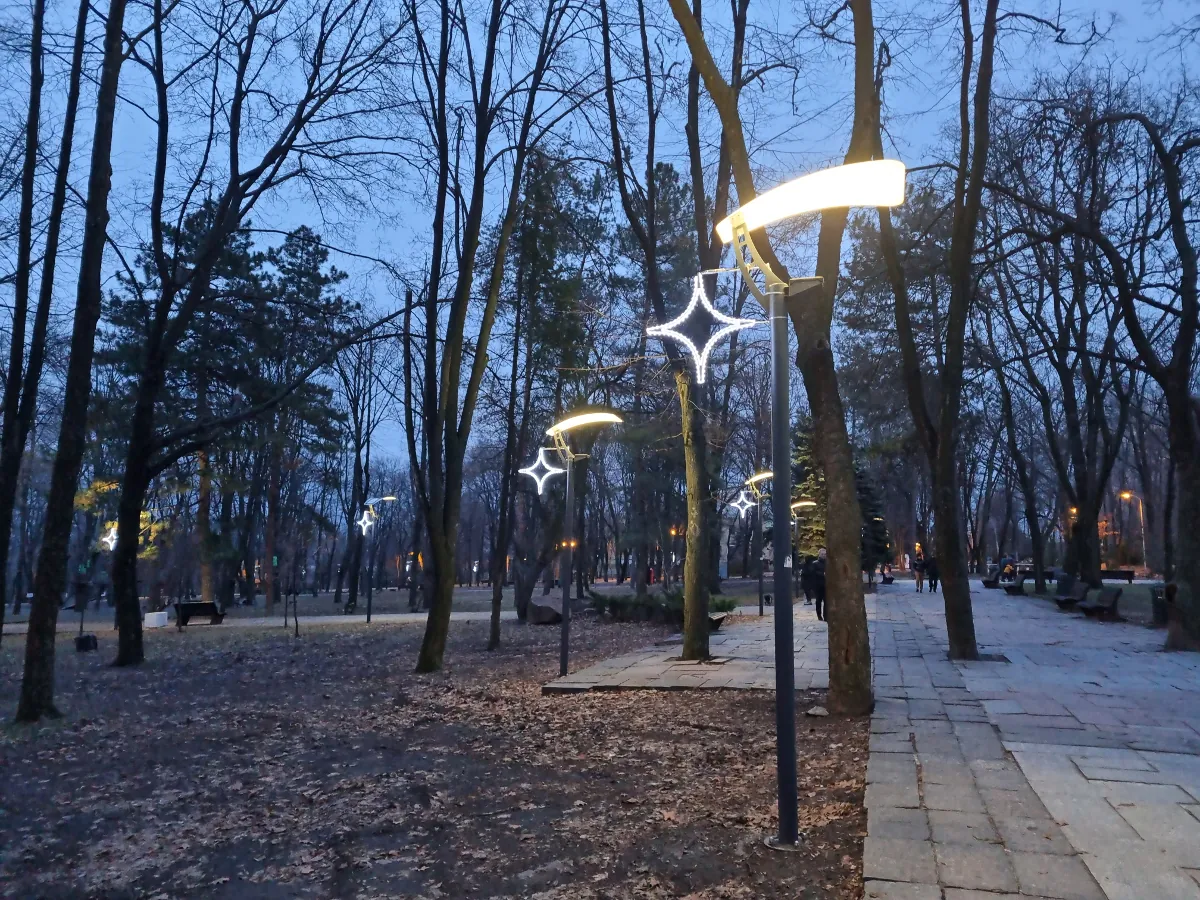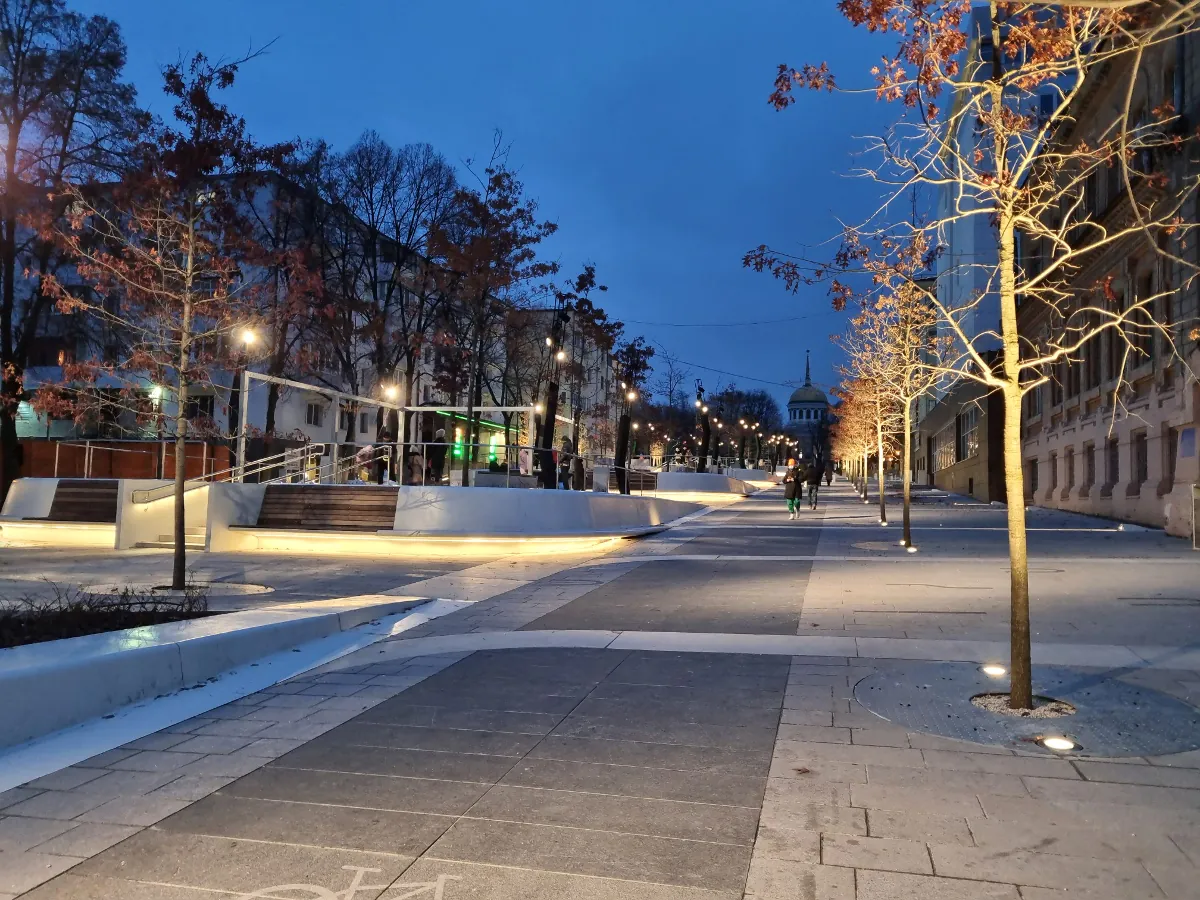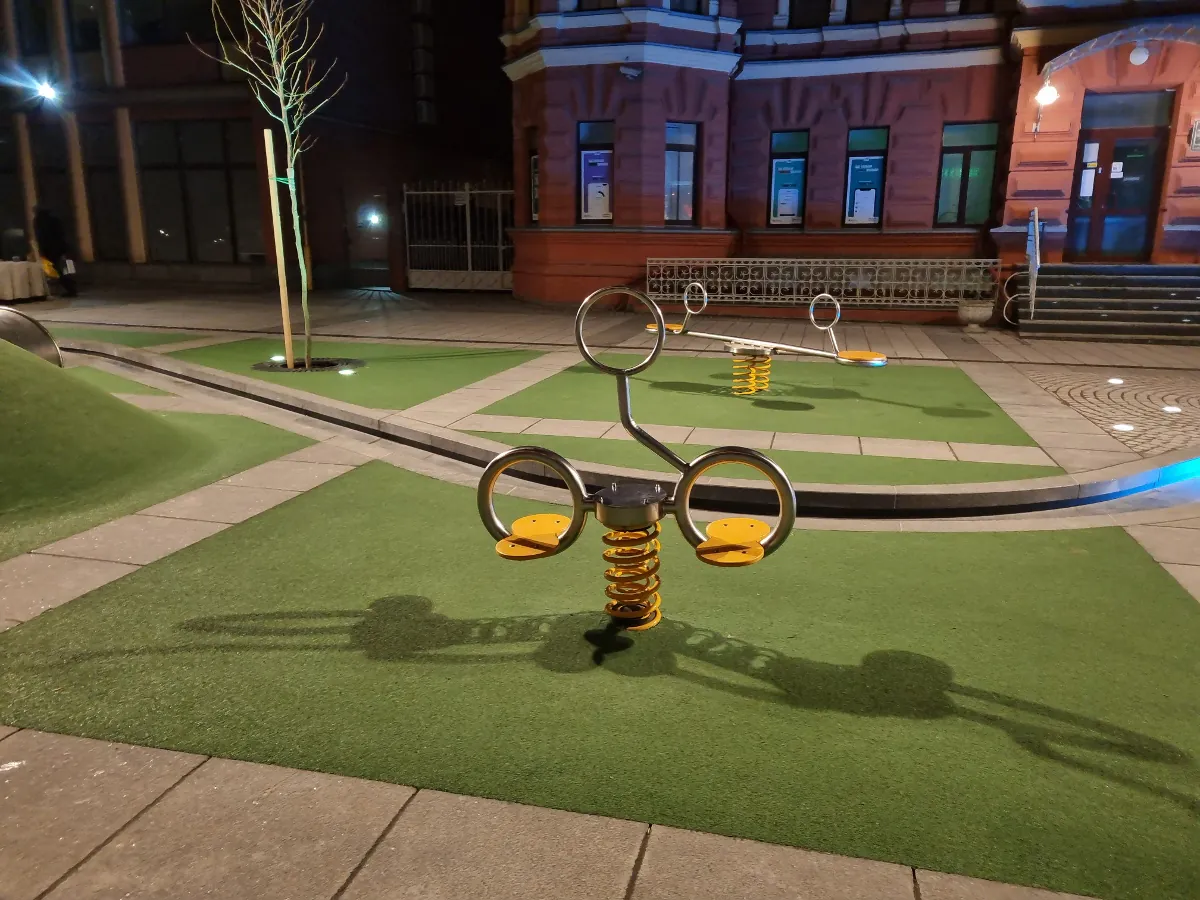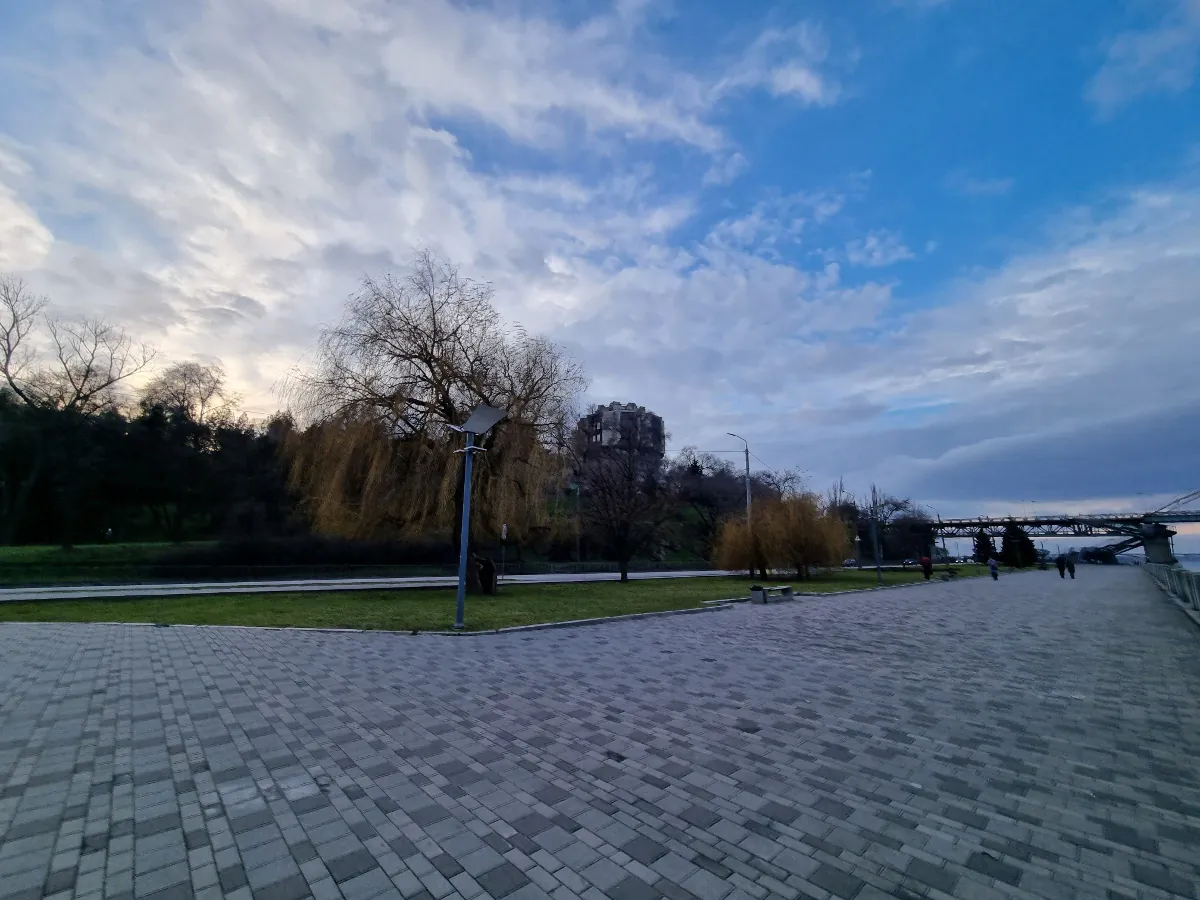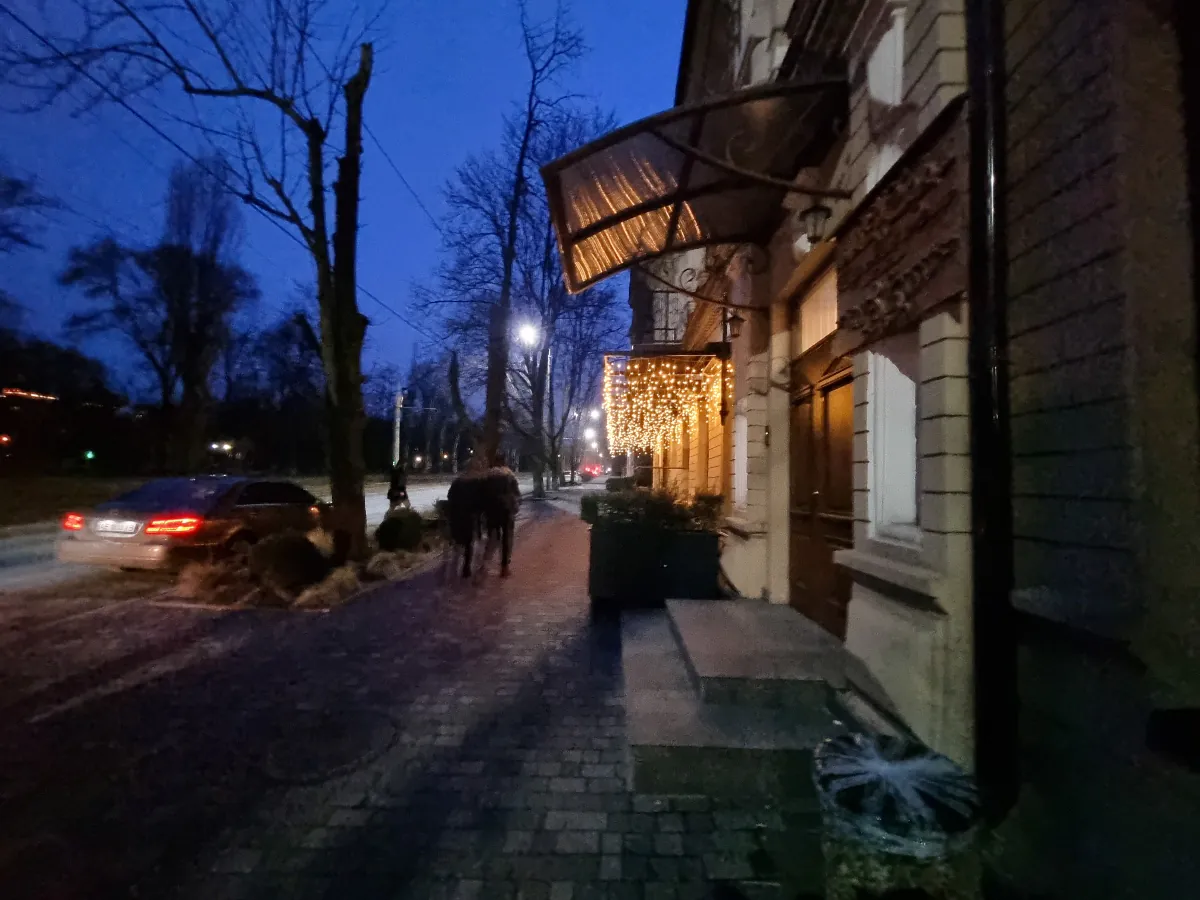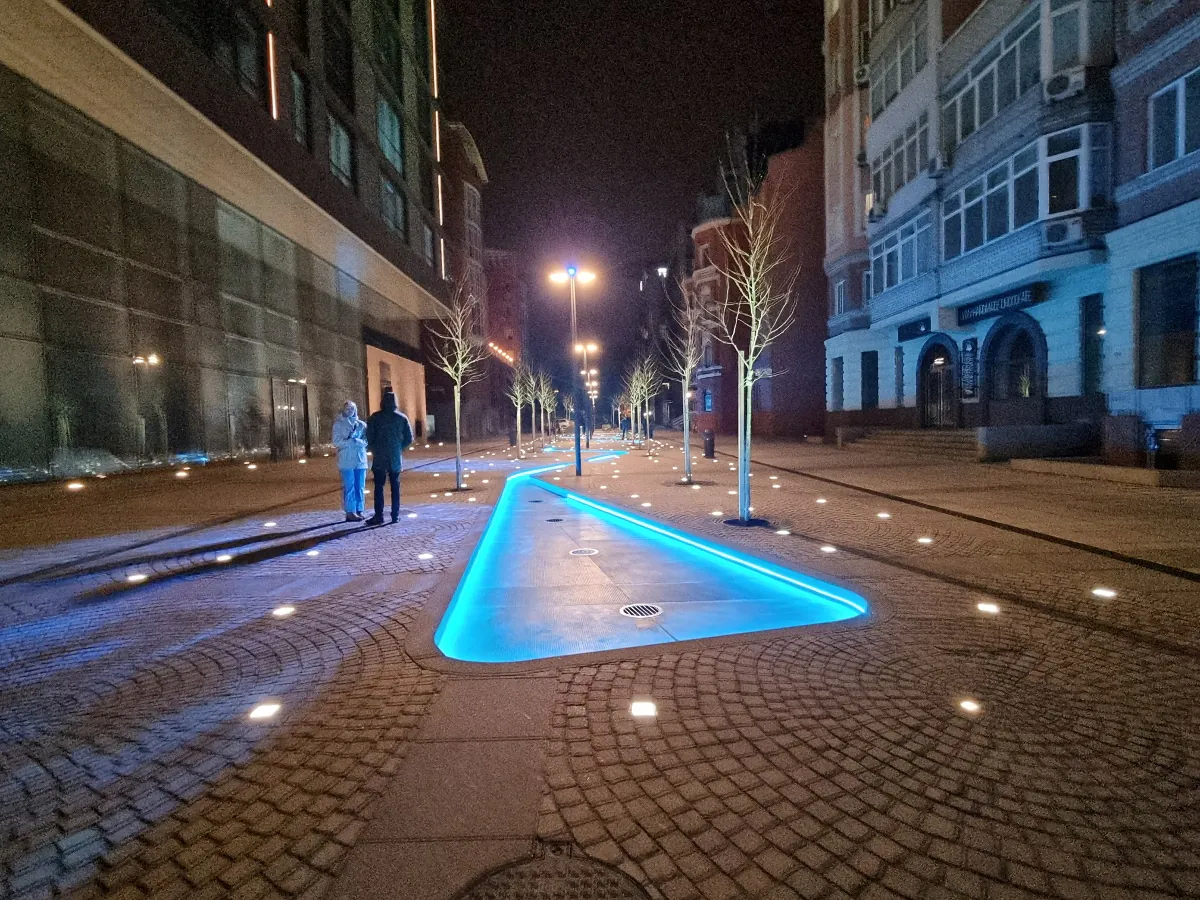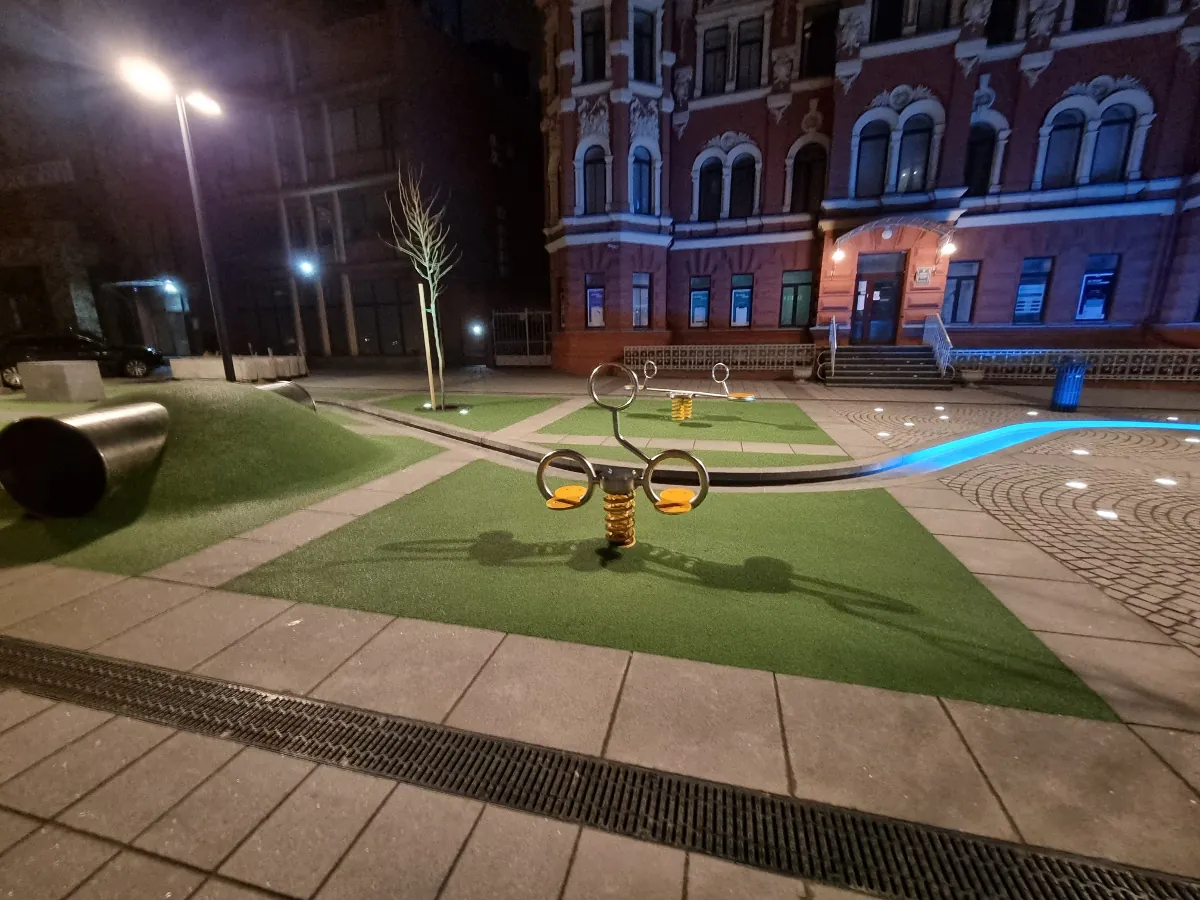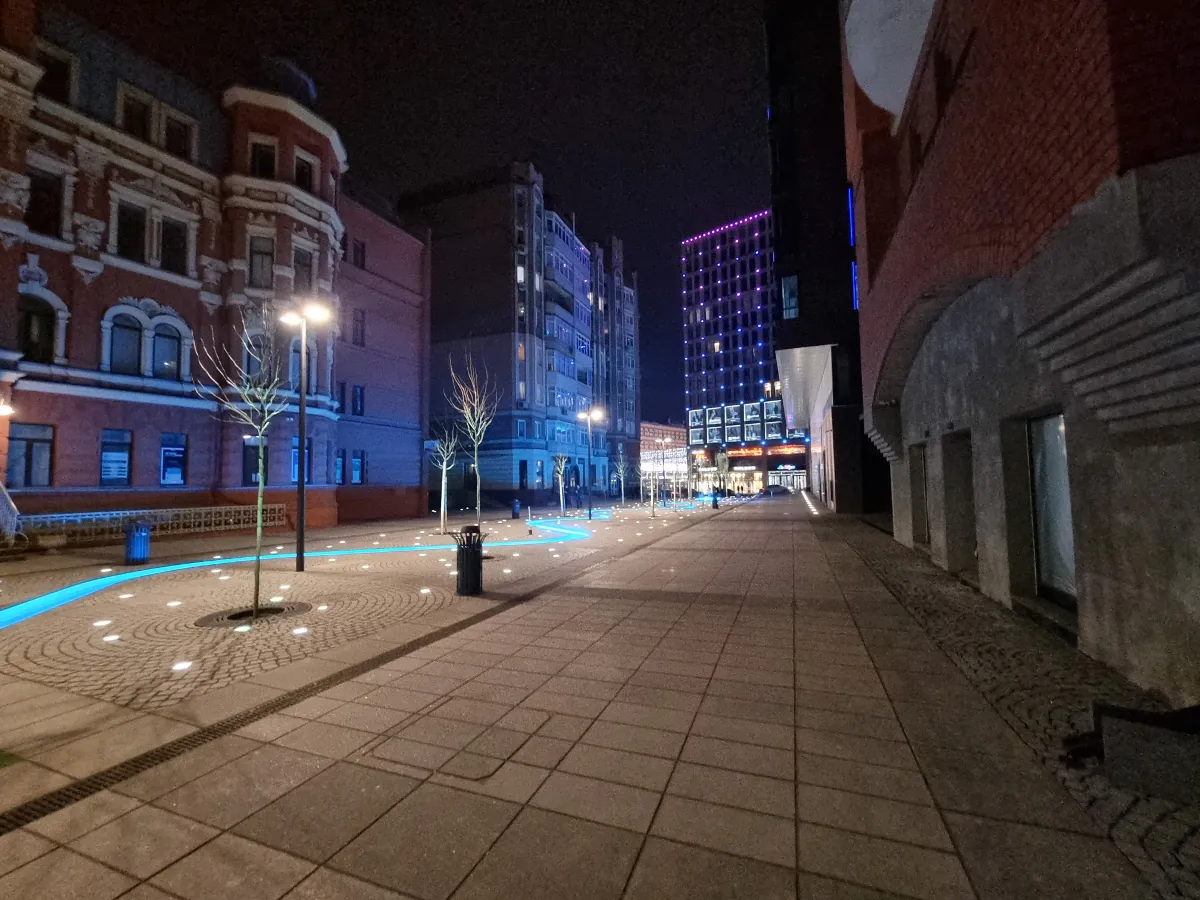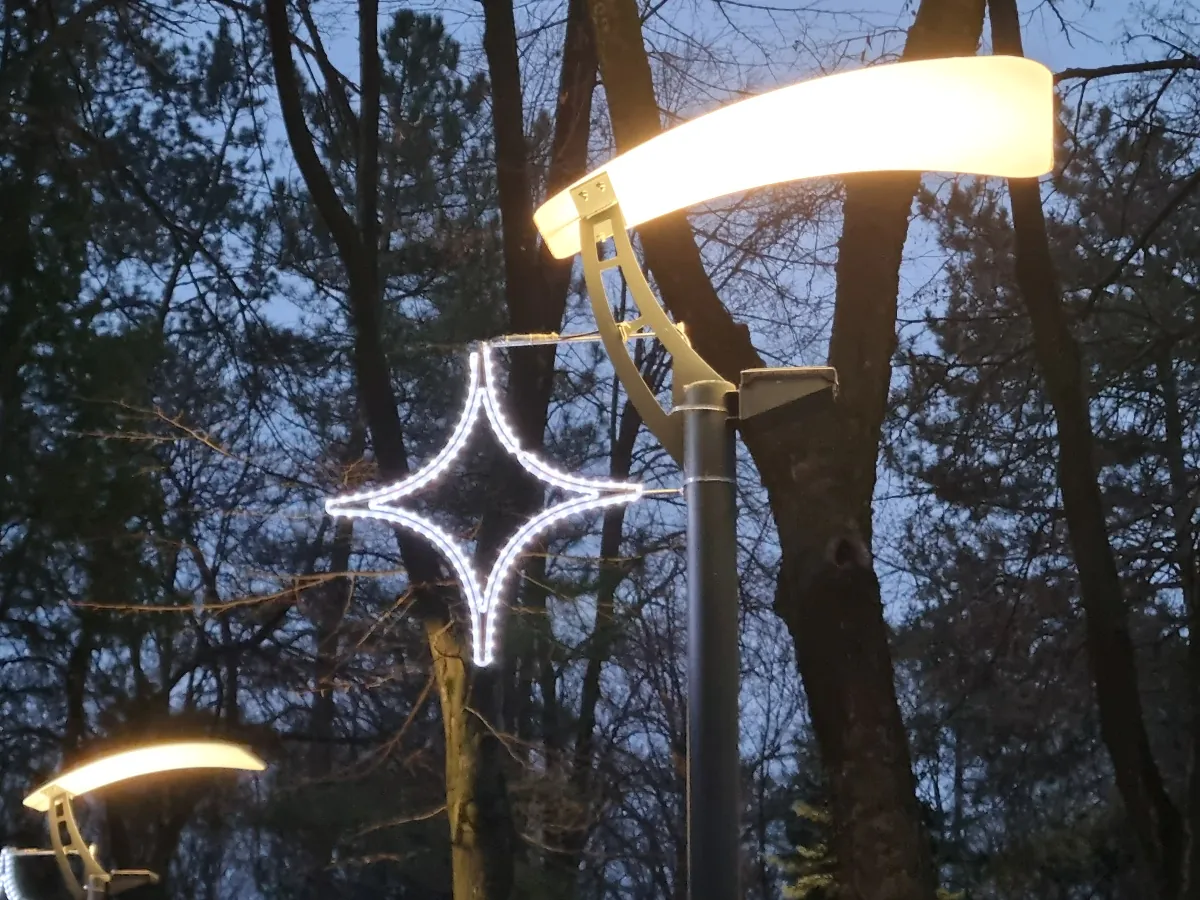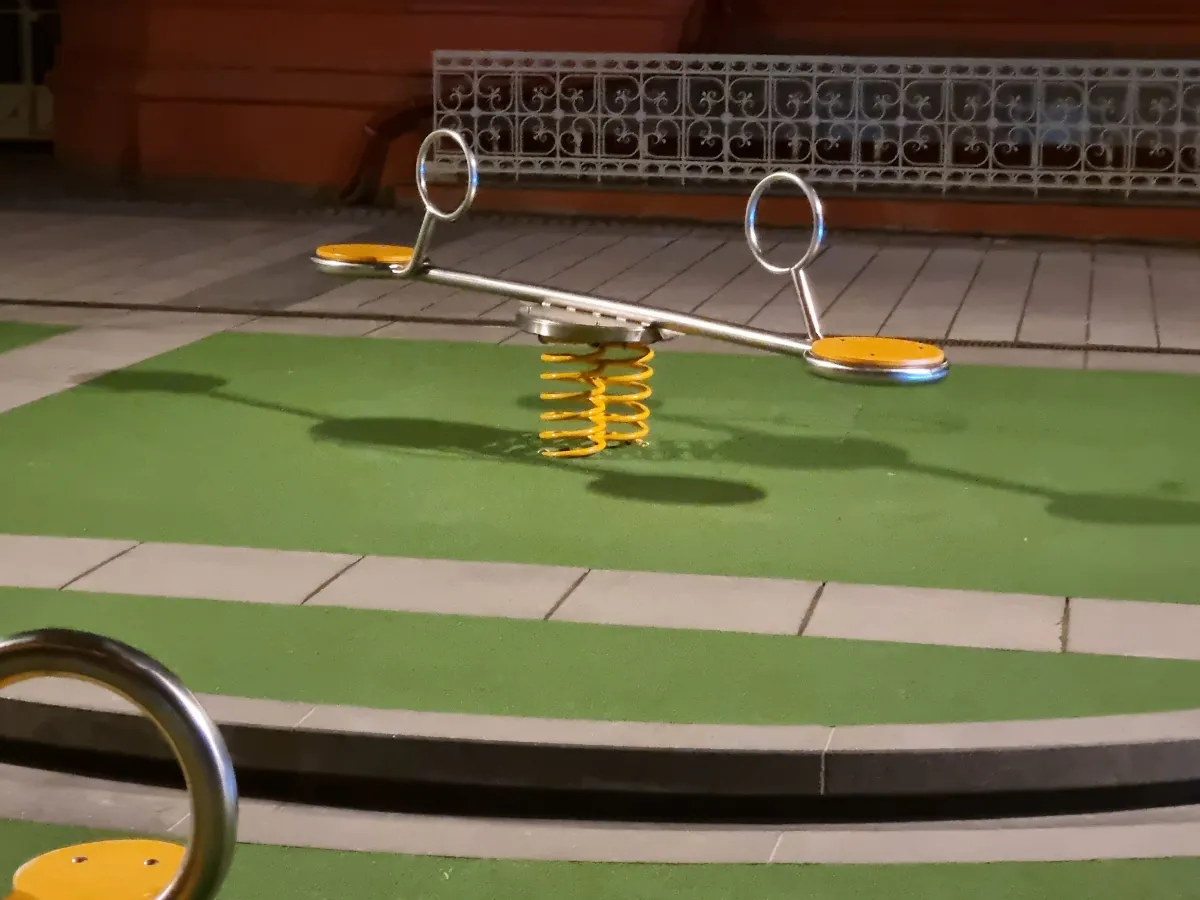© ROOT-NATION.com - Use of content is permitted with a backlink.
Let’s get acquainted with the first smartphone of the Galaxy S line, the Samsung Galaxy S21. Of course, it’s hard not to notice that this year the design was reworked. In our review, we will analyze how the new flagship has improved compared to the previous generation and what is interesting about it.
Read also:
- Samsung Galaxy S21+ review: Standard Plus or Ultra Minus?
- Samsung Galaxy S21 Ultra review: Flawless and Chargerless
Samsung Galaxy S21: Full Specifications
| NETWORK | Technology | GSM / CDMA / HSPA / EVDO / LTE / 5G |
|---|
| LAUNCH | Announced | 2021, January 14 |
|---|---|---|
| Status | Available. Released 2021, January 29 |
| BODY | Dimensions | 151.7 x 71.2 x 7.9 mm (5.97 x 2.80 x 0.31 in) |
|---|---|---|
| Weight | 169 g (Sub6), 171 g (mmWave) (5.96 oz) | |
| Build | Glass front (Gorilla Glass Victus), plastic back, aluminum frame | |
| SIM | Single SIM (Nano-SIM and/or eSIM) or Dual SIM (Nano-SIM and/or eSIM, dual stand-by) | |
| IP68 dust/water resistant (up to 1.5m for 30 mins) |
| DISPLAY | Type | Dynamic AMOLED 2X, 120Hz, HDR10+, 1300 nits (peak) |
|---|---|---|
| Size | 6.2 inches, 94.1 cm2 (~87.2% screen-to-body ratio) | |
| Resolution | 1080 x 2400 pixels, 20:9 ratio (~421 ppi density) | |
| Protection | Corning Gorilla Glass Victus | |
| Always-on display |
| PLATFORM | OS | Android 11, One UI 3.1 |
|---|---|---|
| Chipset | Exynos 2100 (5 nm) | |
| CPU | Octa-core (1×2.9 GHz Cortex-X1 & 3×2.80 GHz Cortex-A78 & 4×2.2 GHz Cortex-A55) – International Octa-core (1×2.84 GHz Kryo 680 & 3×2.42 GHz Kryo 680 & 4×1.80 GHz Kryo 680) – USA/China |
|
| GPU | Mali-G78 MP14 |
| MEMORY | Card slot | No |
|---|---|---|
| Internal | 128GB 8GB RAM, 256GB 8GB RAM | |
| UFS 3.1 |
| MAIN CAMERA | Triple | 12 MP, f/1.8, 26mm (wide), 1/1.76″, 1.8µm, Dual Pixel PDAF, OIS 64 MP, f/2.0, 29mm (telephoto), 1/1.72″, 0.8µm, PDAF, OIS, 1.1x optical zoom, 3x hybrid zoom 12 MP, f/2.2, 13mm, 120˚ (ultrawide), 1/2.55″ 1.4µm, Super Steady video |
|---|---|---|
| Features | LED flash, auto-HDR, panorama | |
| Video | 8K@24fps, 4K@30/60fps, 1080p@30/60/240fps, 720p@960fps, HDR10+, stereo sound rec., gyro-EIS |
| SELFIE CAMERA | Single | 10 MP, f/2.2, 26mm (wide), 1/3.24″, 1.22µm, Dual Pixel PDAF |
|---|---|---|
| Features | Dual video call, Auto-HDR | |
| Video | 4K@30/60fps, 1080p@30fps |
| SOUND | Loudspeaker | Yes, with stereo speakers |
|---|---|---|
| 3.5mm jack | No | |
| 32-bit/384kHz audio Tuned by AKG |
| COMMS | WLAN | Wi-Fi 802.11 a/b/g/n/ac/6, dual-band, Wi-Fi Direct, hotspot |
|---|---|---|
| Bluetooth | 5.0, A2DP, LE | |
| GPS | Yes, with A-GPS, GLONASS, BDS, GALILEO | |
| NFC | Yes | |
| Radio | FM radio (Snapdragon model only; market/operator dependent) | |
| USB | USB Type-C 3.2, USB On-The-Go |
| FEATURES | Sensors | Fingerprint (under display, ultrasonic), accelerometer, gyro, proximity, compass, barometer |
|---|---|---|
| Samsung DeX, Samsung Wireless DeX (desktop experience support) ANT+ Bixby natural language commands and dictation Samsung Pay (Visa, MasterCard certified) |
| BATTERY | Type | Li-Ion 4000 mAh, non-removable |
|---|---|---|
| Charging | Fast charging 25W USB Power Delivery 3.0 Fast Qi/PMA wireless charging 15W Reverse wireless charging 4.5W |
| MISC | Colors | Phantom Gray, Phantom White, Phantom Violet, Phantom Pink |
|---|
Price and positioning
In the Galaxy S line, the regular Galaxy S21 is positioned as the “base flagship”, and also the most compact. If we compare it with the S21+, the difference between the devices is not vast (mainly the size and the battery), but the differences with the Ultra are obvious – it’s got all the best features.
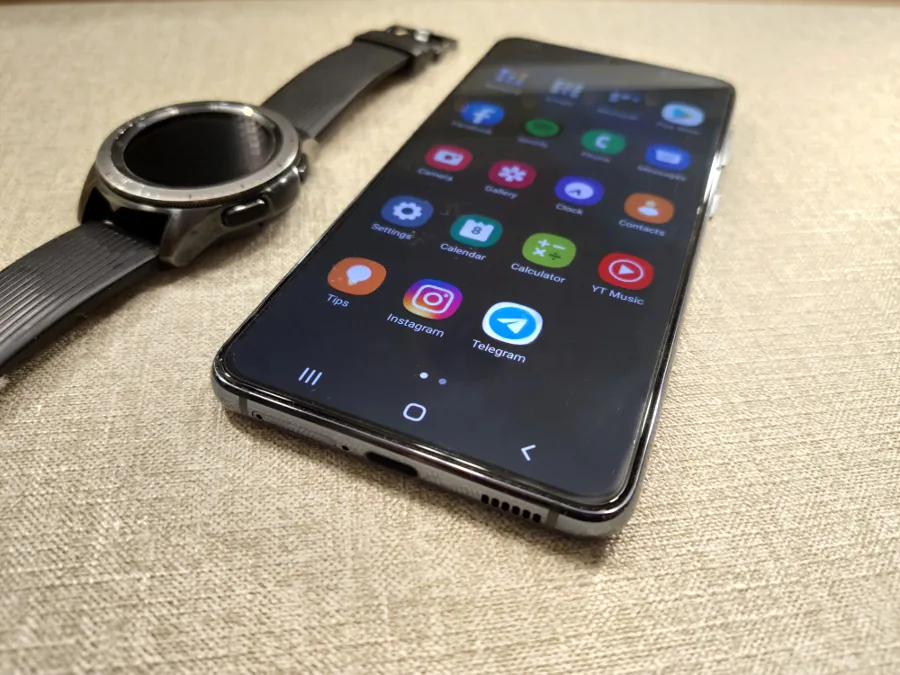
This state of affairs, of course, was reflected in the cost. First, the price for the S21 was about $960 for the 8/128 GB modification, and $1030 for 8/256 GB. For comparison, the initial version of the S21 Ultra with 128 GB of internal storage was priced at $1350. Those who managed to pre-order the S21 before February 4 were more fortunate, since they also got the Galaxy Smart Tag tracker, a certificate for the purchase of Samsung products and an additional year of warranty. Good for them.
Read also:
- Samsung Galaxy S20 FE (Fan Edition) review – Not Only for the Fans
- Samsung Galaxy Z Fold2 review. Not a Concept Anymore
What’s in the box
Prices for flagships have remained at about last year’s level, but the set has become more modest. According to the latest trends, the chargers have gone out of fashion. Now most major players like Apple, Xiaomi and Samsung choose to ignore power adapters. The Galaxy S21 comes with a charging cable, a SIM card eject tool, and accompanying literature.
Design, materials and build quality
It should be noted that the entire Galaxy S21 line has improved in terms of design. If anything, Samsung’s 2021 flagships are now harder to confuse with devices from other brands. Why, you can’t even confuse them with other Samsung smartphones. The work of the design department, as they say, is obvious.
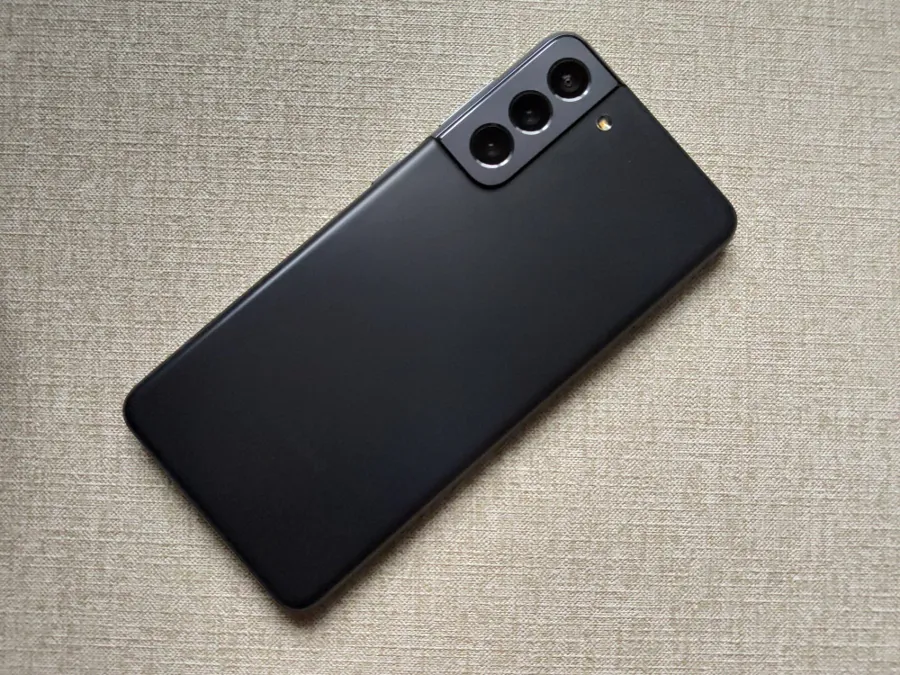
The first thing worth noting about the S21 is the camera block. The holes for the cameras have increased in diameter and look much neater now. At the same time, the flash remained outside the “island”.
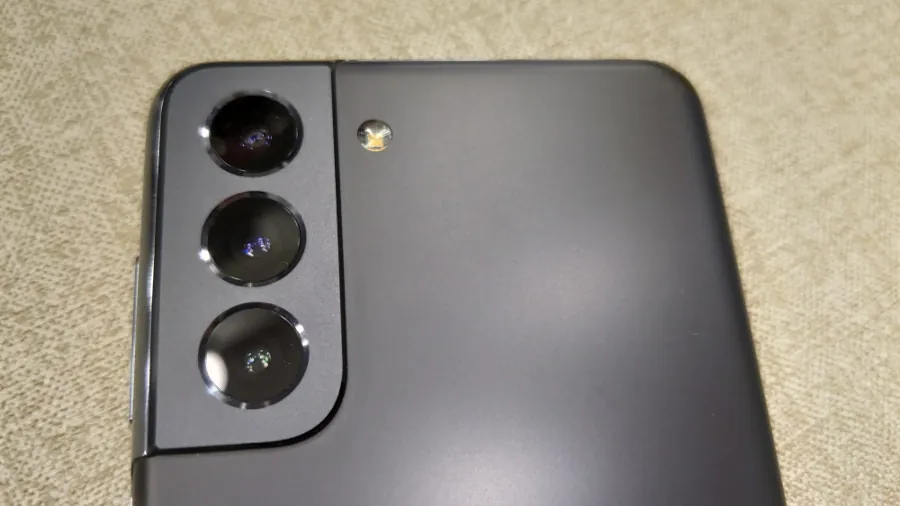
We have a Phantom Gray version for our review, but the smartphone is also available in Phantom Pink, Phantom Violet and Phantom White.
Materials and the build quality are excellent, which is to be expected. The reverse side is represented by a frosted glass panel. In a dark gray, almost graphite color, it looks classy and doesn’t collect fingerprints. The camera block has the same nice texture, but it’s slightly different in hue. However, this does not prevent the smartphone from looking coherent. At the very bottom, you can see the discreet brand logo, and below it are the barely visible markings.
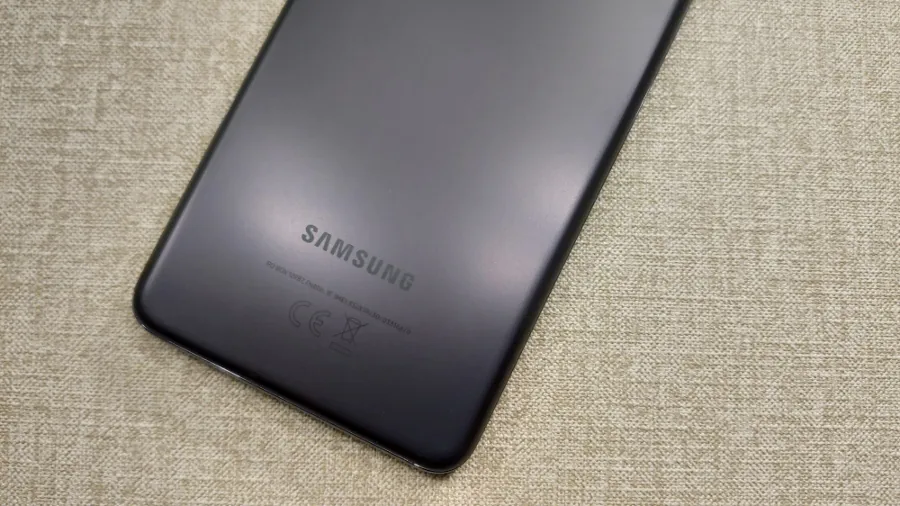
The edges are made of metal and have a matching metallic glossy texture. The display here is Infinity-O, with no notches for the front-facing camera, and only a small hole under the earpiece speaker. The latter, by the way, is rather difficult to discern, since the speaker is placed in a super-thin elongated hole, and to notice it you need to specifically strain your eyes. The reason is protection against water (IP68).
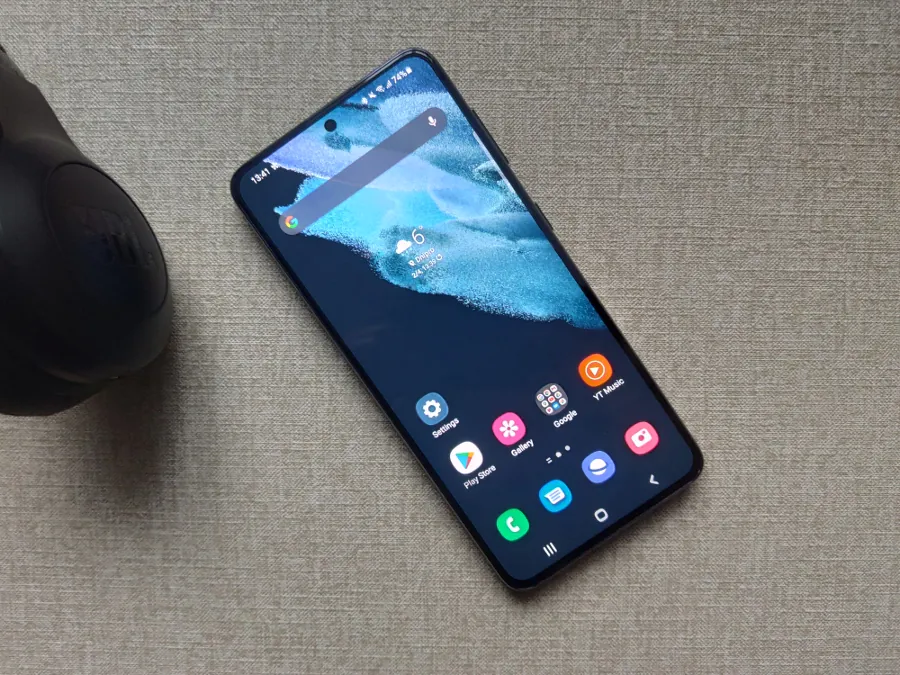
The bezels around the screen are very modest, but the “chin” is still larger. By the way, the updated flagship line has lost the round sides of the screen. In my opinion, the smartphone still looks fine – even better.
Read also:
- Samsung Galaxy M51 review: Snapdragon 730G and 7000 mAh battery
- Samsung Galaxy M31s review – Mid-Ranger That Gets The Job Done
The layout
The main elements of the Galaxy S21, in addition to those already described above, are arranged as follows. The left end was left as it is (that is, empty), and on the opposite side you can see the power button and the volume rocker. The usual.

Above is a pair of holes for microphones, and on opposite is the charging connector, the main speaker, another hole for a microphone and a slot for SIM-cards. Alas, the new generation does not support SD cards. Although in the S20 it was possible to expand storage.
A wired headphone jack is also missing. Who needs wires nowadays! You’ll have to get hold of an adapter if you still use conventional headphones.
Samsung Galaxy S21 ergonomics
I dare say that the “junior” Galaxy S21 is perhaps the most convenient smartphone in the lineup thanks to the modest screen size, which is “only” 6.2 inches. Let me remind you that the S21+ was awarded a 6.7-inch diagonal, and the Ultra has 6.8 inches. And believe me, 0.5″ makes all the difference. However, the S20 predecessor had the same format.
With dimensions of 151.7 × 71.2 × 7.9 mm and a weight of 171 g, the smartphone is quite comfortable in the hand. Despite the glossy edges, the device does not try to slip out. But, no matter how small the S21 is, using it with one hand is impossible. In order to reach the Edge panel (it is located on the screen near the volume control buttons) while holding the smartphone in your left hand, you will have to perform an impressive balancing act. Don’t even try it.
You can reach the buttons them without any problems, no matter where your hand is. This applies not only to the power button, but also to the fingerprint scanner, which is located in the screen. In this regard, the smartphone is well thought out.
Galaxy S21 display
The Galaxy S21 screen is a 6.2-inch Dynamic AMOLED 2X matrix with Full HD+ (2400×1080) resolution, 421 ppi pixel density and refresh rate that goes up to 120 Hz.

Why “up to 120 Hz”? Because there are two modes in the settings: standard 60 Hz and adaptive, which automatically changes the frequency depending on the usage scenario, and it varies from 48 Hz to 120 Hz. The display is protected by Gorilla Glass Victus, and on top of it the manufacturer installed a protective cover.
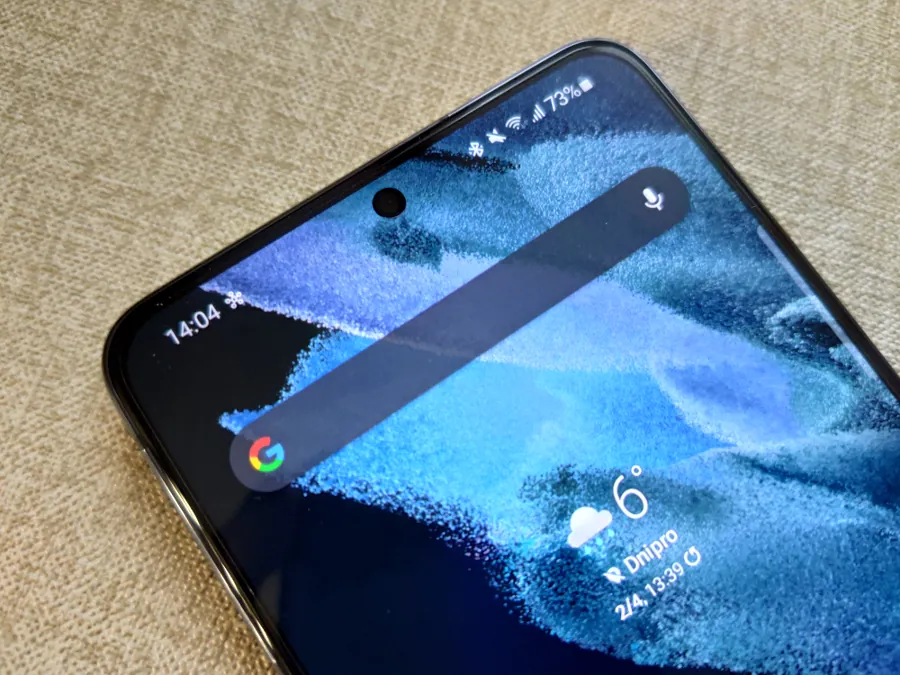
If you compare the Galaxy S21 with its predecessor, some numbers look more modest. The S20 has higher resolution (3200×1440), as well as pixel density (563 ppi). And you can clearly see the downgrade. While comparing the two screens side by side, you might feel the difference, but aside from the numbers, the Galaxy S21’s display is still impressive in its own right.
In my opinion, all parameters are well balanced. There is an excellent margin of brightness, great color reproduction (as always, you can change it in the settings – from natural to rich colors with additional white balance adjustment), invariably deep black, which provides high contrast, and great viewing angles. Scrolling feeds with adaptive refresh rate mode on is a treat. It is comfortable to work with any content, be it watching videos, text, games or social networks. By tradition, Always On is also supported, which can be customized in the settings to your liking.
Performance
In Europe the S21 comes with the brand new Exynos 2100, but some markets are getting versions with Snapdragon 888 on board. Nothing out of the ordinary for Samsung.
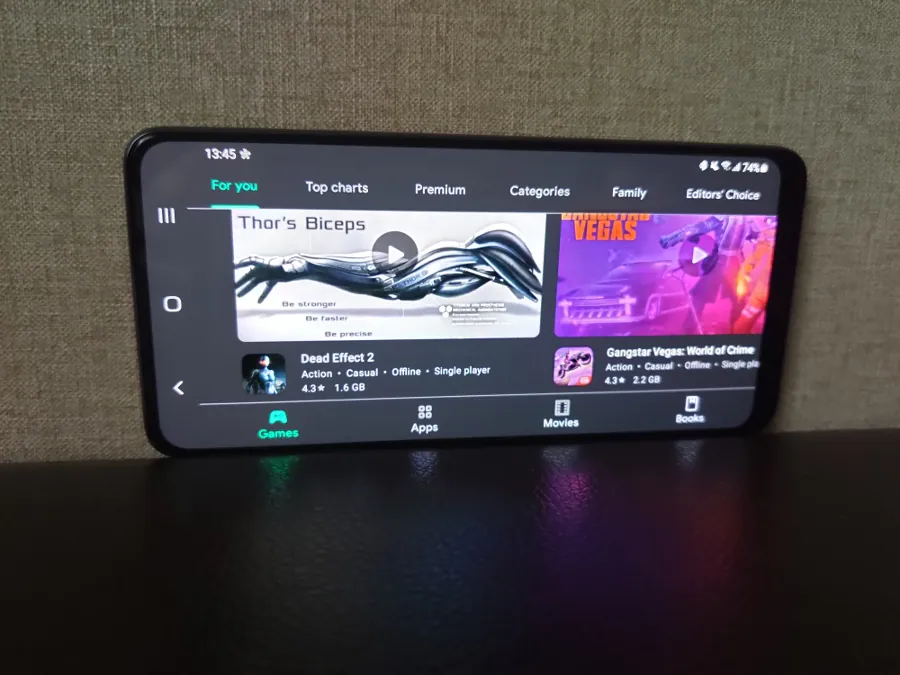
The proprietary Exynos 2100 is a 5nm 8-core chipset that consists of a powerful 2.9GHz Cortex-X1, three 2.8GHz Cortex-A78s, and four energy efficient 2.2GHz Cortex-A55s. Mali-G78 MP14 handles the graphics. And if you look at the the benchmark results, the Exynos 2100 outperformed last year’s S20 Ultra, which runs on the Exynos 990.
The smartphone comes with 8 GB of LPDDR5 RAM and 128 GB or 256 GB of storage (UFS 3.1). As already mentioned, expanding the storage is impossible, so you should immediately think about how much memory you may need for work. Basically, if you want to experiment with 8K content, 256 GB may not be enough.
In fact, the Galaxy S21 is a very nimble and future-proof smartphone. It has more than enough firepower to last a couple of years. In fact, it can run anything, even the heaviest of games. PUBG feels great with maximum settings (Ultra settings are not available for this chipset). The body of the device almost doesn’t heat up; I just couldn’t make it throttle.
Read also:
- Samsung Galaxy Note20 Ultra review – The Devil Is in the Details
- Samsung Galaxy Note20 review – Stripped-Down Flagship with a Stylus
Software
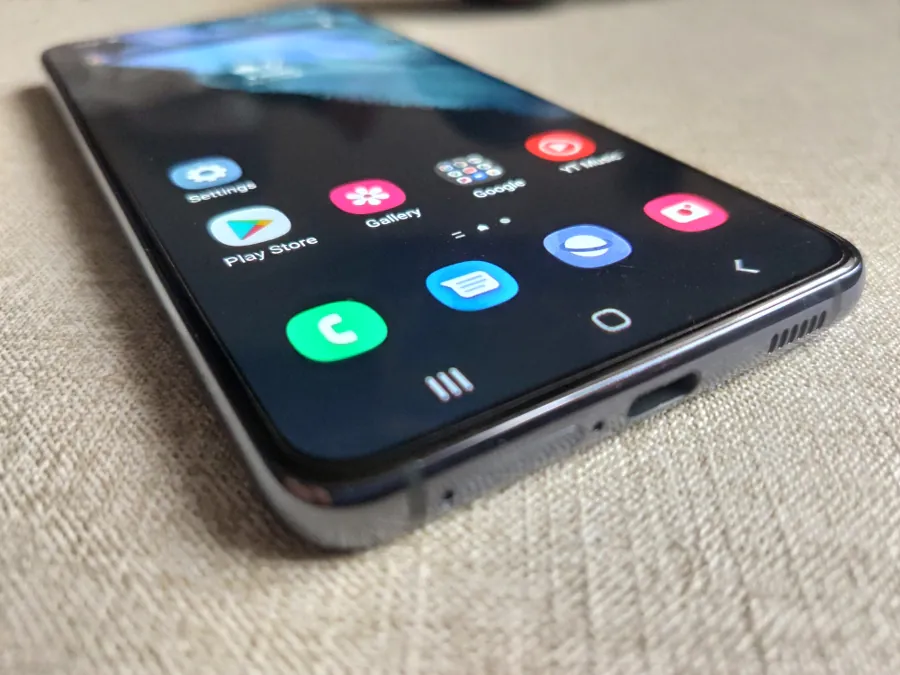
Galaxy S21 runs Android 11 with native One UI 3.1. The appearance of the notification curtain has slightly changed, and there’s now quick access to connected devices and the Multimedia mode, which allows you to quickly return to watching videos or listening to music.
There’s also the Edge quick access panel, the ability to conveniently link a smartphone with Windows, Samsung DeX, Android Auto and Bixby scripts, improve the quality of video content, customize the power button, clone apps and just a myriad of settings for convenient work. Customizing the phone and learning all the features might take you over a week.
Unlocking
Biometric protection of the device is represented by a standard duo of a face scanner and a fingerprint scanner. Let’s start with the latter. The Galaxy S21 uses an ultrasonic in-screen fingerprint sensor rather than an optical one, which is accurate and fast. This is one of the rare cases when, after several weeks of testing, I don’t remember a single error. I want to praise the location of the scanner itself – the optimal height from the bottom edge makes it possible to conveniently unlock the smartphone with either hand.

In general, the fingerprint sensor works great. But the face scanner could be better. The recognition speed leaves much to be desired, even in good lighting. And, yes, sometimes the smartphone simply does not unlock when the screen is activated – you have to resort to a fingerprint scanner, which is not always convenient. It was possible to slightly neutralize the peculiarities of the scanner’s operation by adding an alternative sample of the user’s face. After that, the smartphone stopped stumbling, but in most cases the speed still remained low.
In short, I do not recommend using the face scanner. In addition to the fact that this is not the safest way to protect the device, it has some issues. But the fingerprint sensor gets 10 out of 10, easily.
Samsung Galaxy S21 cameras
The Galaxy S21, like the S20, has three main camera sensors. Here we have a leading sensor with a resolution of 12 Mp (f/1.8, 1/1.76″, 0.8 µm), optical stabilization and video recording in 8K (7680×4320, 24 fps), a 12 Mp wide-angle (f/2.2, 1/2.55″, 1.4µm) with a 120° field of view and a 64MP telephoto lens (f/2.0, 1/2.55″, 1.4µm) with 3x hybrid zoom.
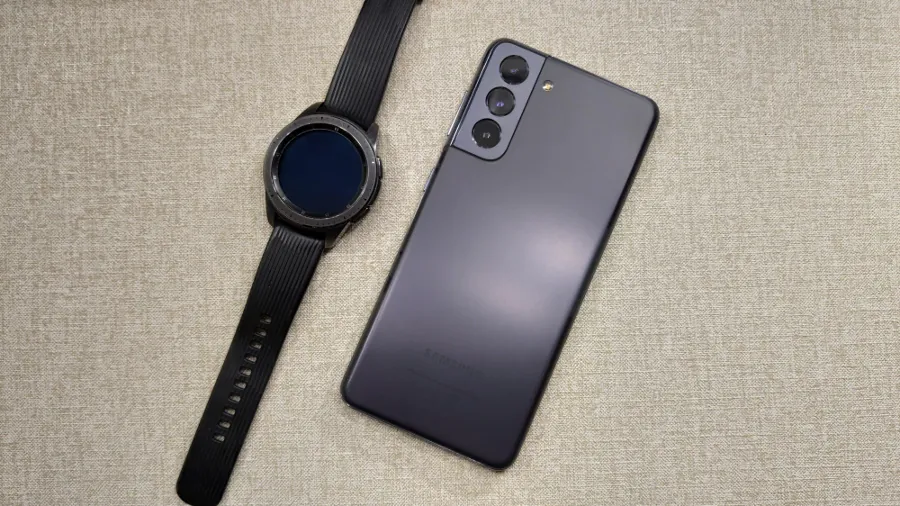
There are more than enough modes. For video, in addition to the standard video mode, there is a manual mode, slow motion, super slow motion and hyperlapse, as well as a cinema mode, which allows you to simultaneously shoot with the front-facing and main cameras. Conventionally, I would like to call it “the operator’s reaction to what is happening.”
For photos there is a standard mode, night shooting, manual, panorama and a “Food” mode. Add to that the “Multi-shot” mode, which simultaneously makes short videos and “stretches” frames in different formats, Bixby camera, AR-mode, built-in and custom filters.
The main cameras are good for any type of shooting. It is impossible not to notice how the AI slightly tightens the color and contrast, but this is done quite competently and appropriately, without overdoing it, as is sometimes the case on some smartphones. Anyway, thanks to light photoshop, dull winter landscapes look much more cheerful. There is not much to complain about when shooting at night either. The light level is noticeably high, but as a result, there is noticeably more detail in the photo. This is especially evident when you shoot at dusk. Even when it’s dark, the camera can easily go back in time and brighten the scene. Like a small time machine.
The wide angle, in contrast to the master module, is much simpler. As always, the center of the photo remains detailed, but the edges are blurred, and in low light, they are also noticeably grainy. And the perspective is, of course, distorted. It’s not like the cheaper Samsung smartphones (A and M series), but still. In my opinion, the wide-angle sensor is good only for daytime photos and preferably panoramic ones.
Photos taken with a wide-angle camera in full resolution
And finally, a telephoto module that works with a 3x hybrid zoom. What can I say, the pictures are pretty good during the day – there is plenty of detail and clarity. But at night, clarity is lost, elements are blurred and the whole experience is rather mediocre.
Photos taken with a telephoto module in full resolution
The front-facing 10-megapixel camera with f/2.2 aperture can shoot video in 4K (60 fps). In the camera app you can do minimal retouching, apply filters (including those that you created yourself), reuse the last selected mode and filter, and make a group selfie. In general, pictures and videos are quite high quality in proper lighting, but what else do you need from a selfie camera?
Battery life
The battery in the Samsung Galaxy S21 is 4000 mAh. Usual stuff, but it is sufficient. With activated Wi-Fi, Bluetooth, Always On, and adaptive screen frequency the smartphone holds up perfectly all day.
The S21 supports 25W fast charging, 15W wireless fast charging as well as reverse charging. I didn’t have a 25-watt charger at hand (and it’s not included in the box), but using an 18-watt charger, the smartphone charged from 0 to 100% in a little over an hour. It’s a good result.
Wireless charging is a funny story. I have an off-brand wireless charger, but it gives about 10 watts. But the catch is that Samsung, apparently, artificially reduces the speed of wireless charging from non-original devices, so it takes an unforgivably long time to charge the S21. The experiment showed that it needs more than 4 (!) hours for a full charge. That is, if you plan to use wireless charging stations, you will have to buy the original one. And it costs a pretty penny.
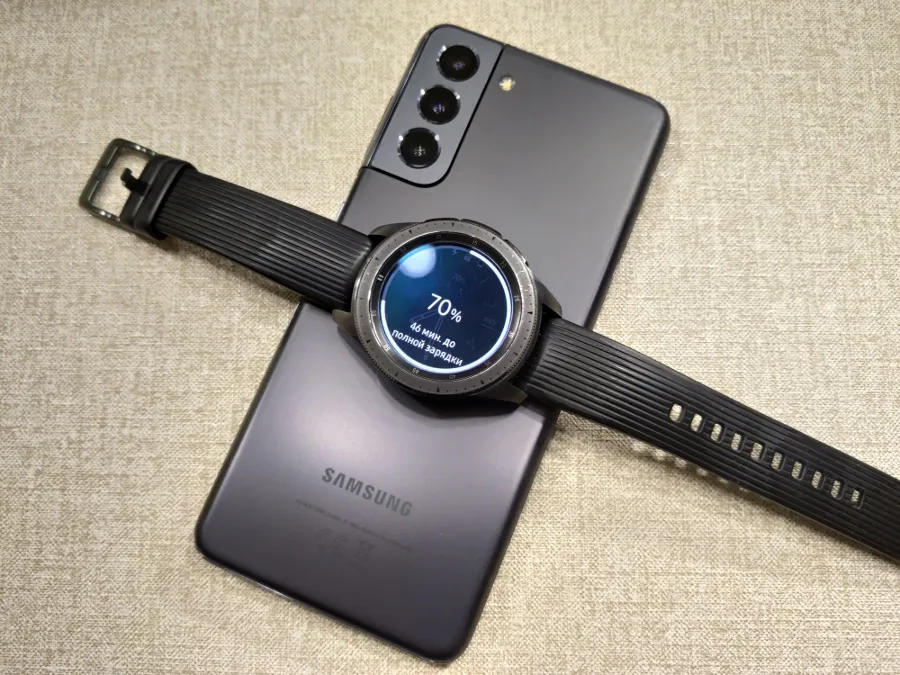
Reverse charging works well, albeit at a modest speed. You can easily charge a smartwatch or earbuds with the smartphone if they support wireless charging. Technically, another smartphone can also be recharged, but it takes a long time and 4000 mAh is not enough to share a decent percentage of the charge. But I think the Galaxy S21’s reverse charging feature is primarily needed to keep Samsung wearable accessories charged. And the smartphone copes with this perfectly.
Wireless communications
The Galaxy S21 supports Wi-Fi 6, Bluetooth 5.0, NFC and a stack of geolocation services (GPS, A-GPS, GLONASS, Beidou). But the cherry on the cake is 5G support. If last year Samsung supplied its 5G flagships only to those markets that have already adopted the new communication standard, now the standard is the same for everyone.
Galaxy S21 sound
The Galaxy S21 sounds good. Not perfect, but very good. Here the stereo effect has been preserved by creating a stereo pair between the external and the earpiece speakers. With videos with lots of speaking, the smartphone sounds very decent, but with music or in games, a tilt towards the main speaker is slightly audible, since it is louder and richer. Plus, the different directions of both speakers (the main one – to the side, the earpiece – to the user) also does not contribute to a perfectly balanced sound. Because of this, the magic of stereo disintegrates a bit, but overall, the sound is pleasant, with a decent scene.
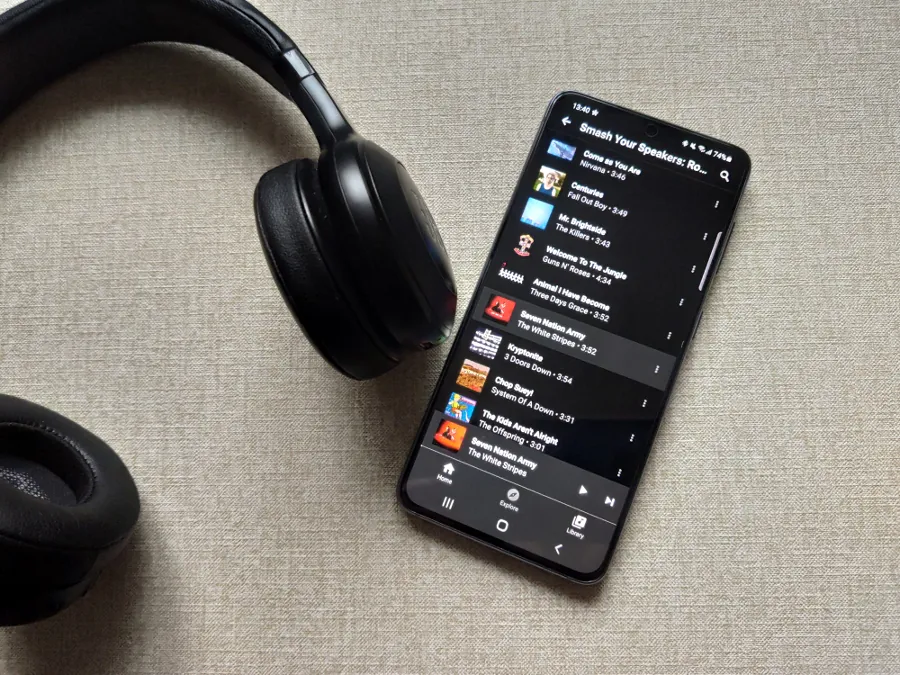
The sound through wireless headphones is great. And it gets even better when you enable Dolby Atmos. There is a built-in equalizer and Adapt Sound function. But, in my opinion, the basic sound does not need additional enhancements.
Verdict
The Samsung Galaxy S21 is continuation of the flagship line, improved in many ways. Despite the fact that on paper some of the screen characteristics are more modest than the S20, the display is simply excellent, in many ways thanks to the adaptive refresh rate. In addition, the design has become more interesting and recognizable, and the hardware has become more powerful. We didn’t see a revolutionary change in cameras this year, but the S21 still has one of the best cameras on the market.
As for the missing charger in the package, it’s a shame, really. I really doubt that everyone and their mother has a 25-watt charger, which means you will have to buy it separately. Therefore, no matter what A-brands are fighting for, removing the charger from the box, for an ordinary user, is an inconvenience.
All issues aside, the Galaxy S21 is good device. It’d be even better if not for lack of support for SD cards, but not everyone cares about such things. Otherwise it’s a strong phone with all the necessary features.

Subscribe to our accounts:


